The Acropolis of Athens is a must see when visiting Athens. It is the most important center of ancient Greece and represents the birthplace of democracy. An acropolis refers to a complex built on a high hill or high point so the Acropolis of Athens is literally a complex built on a high point in Athens. The complex once consisted of many building but there are currently only 5 definable structures remaining.
The five structures that remain are all seen in the photo above and are the Propylea, the Temple of Athena Nike, the Parthenon, the Erectheion and the Theater of Dionysus. Each of these are highlighted below.
The Propylea and the Temple of Athena Nike
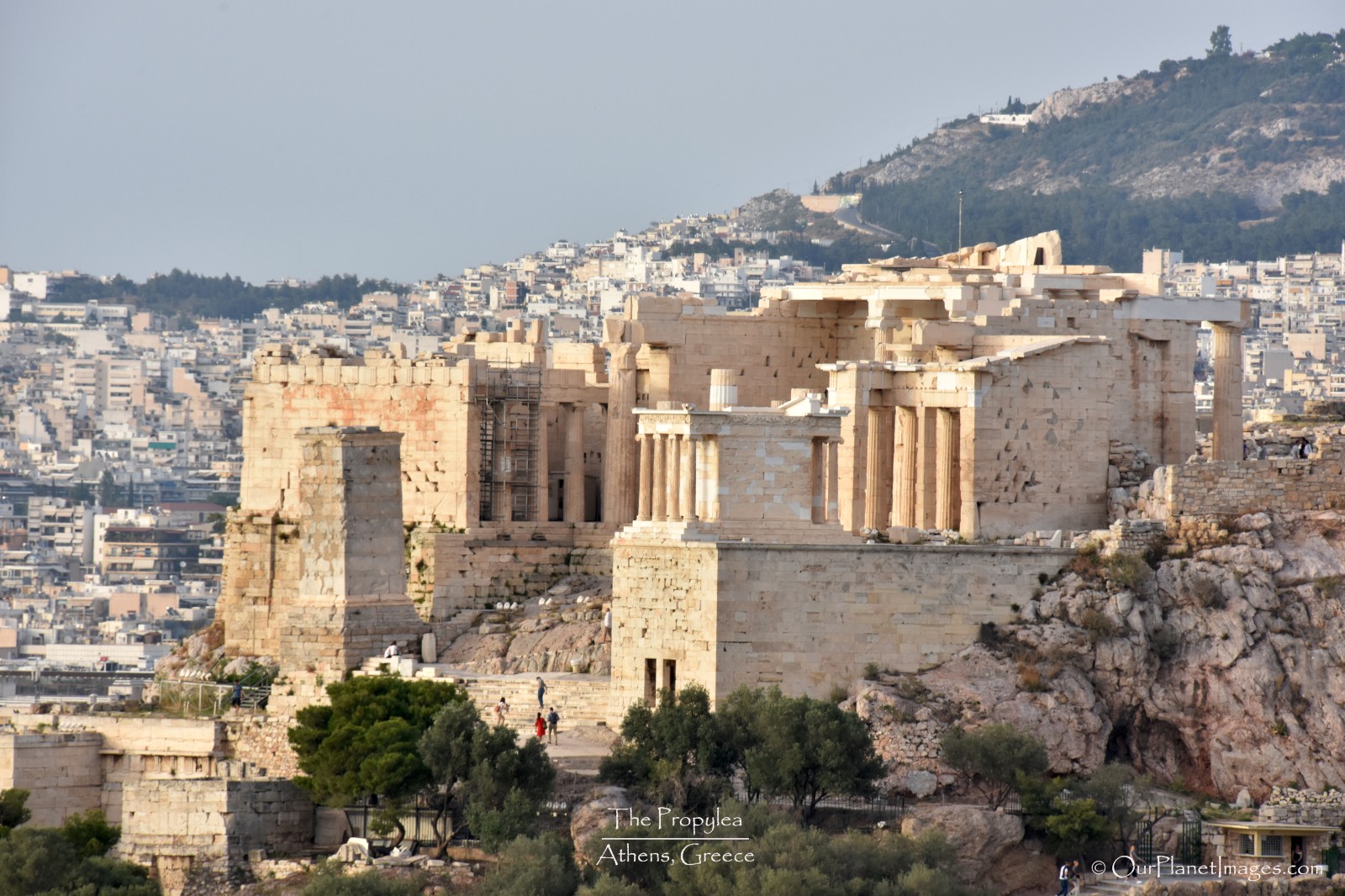
I chose to put these two together because they appear to be the same structure but there are actually two separate structures.
The Propylea is the gateway to the Acropolis and is composed of a central hall and two lateral wings. The entrance to the complex is through the center hall. The north wing was decorated with painted panels and was used as a picture gallery. The south wing was the entrance to the Temple of Athena Nike.
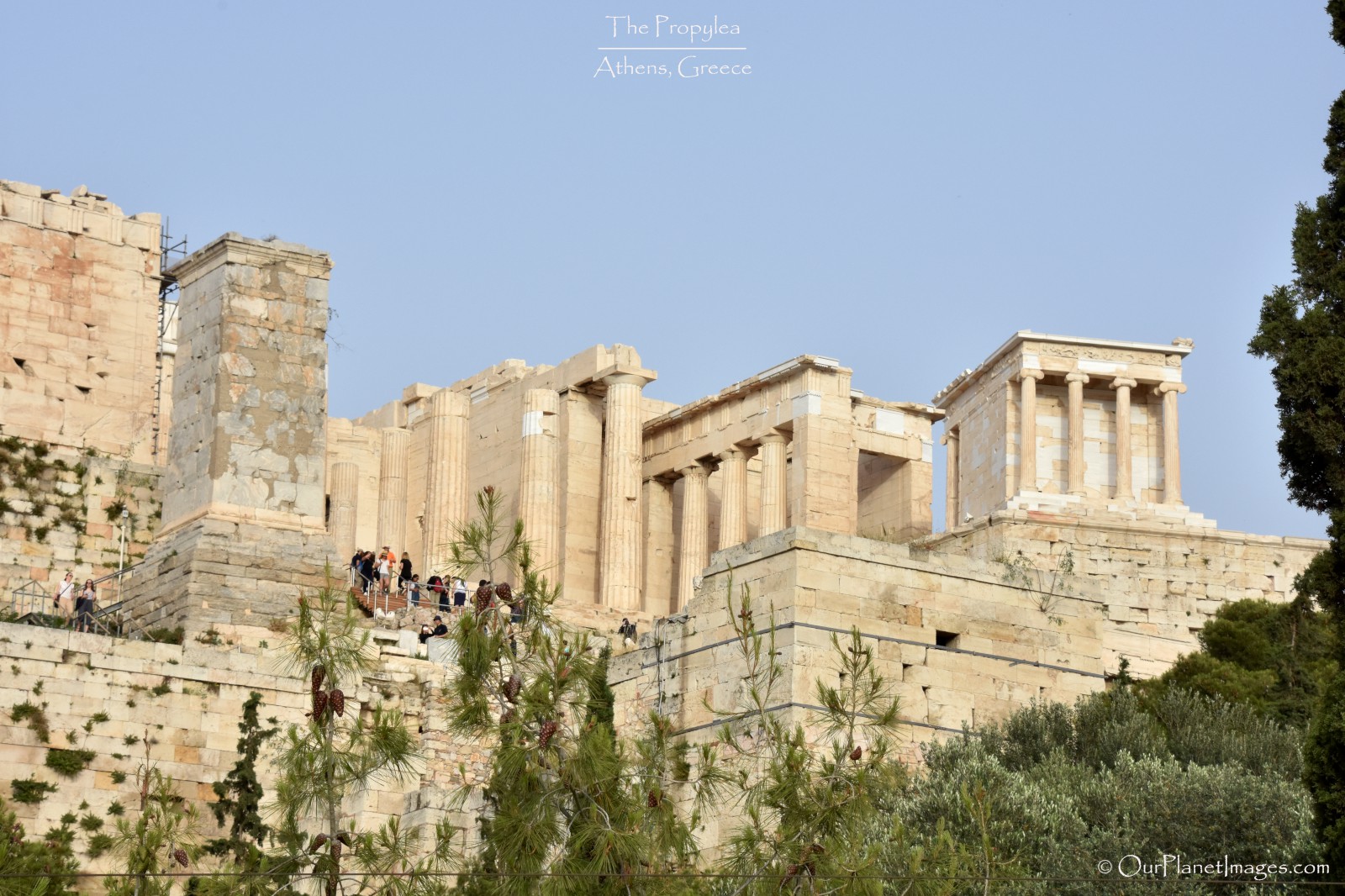
The Temple of Athena Nike is the small building on the right of the above photo. This small temple is an almost square building on the south-west edge of the Acropolis. The entrance and back of the temple have four period style columns. The photo below is a closer view of the temple but does not show the entrance to the temple because the temple is closed to the public. The Temple of Athena Nike was the shelter of a statue of the goddess Athena holding a pomegranate, the symbol of fertility, in her right hand and a helmet, the symbol of war, in her left hand.
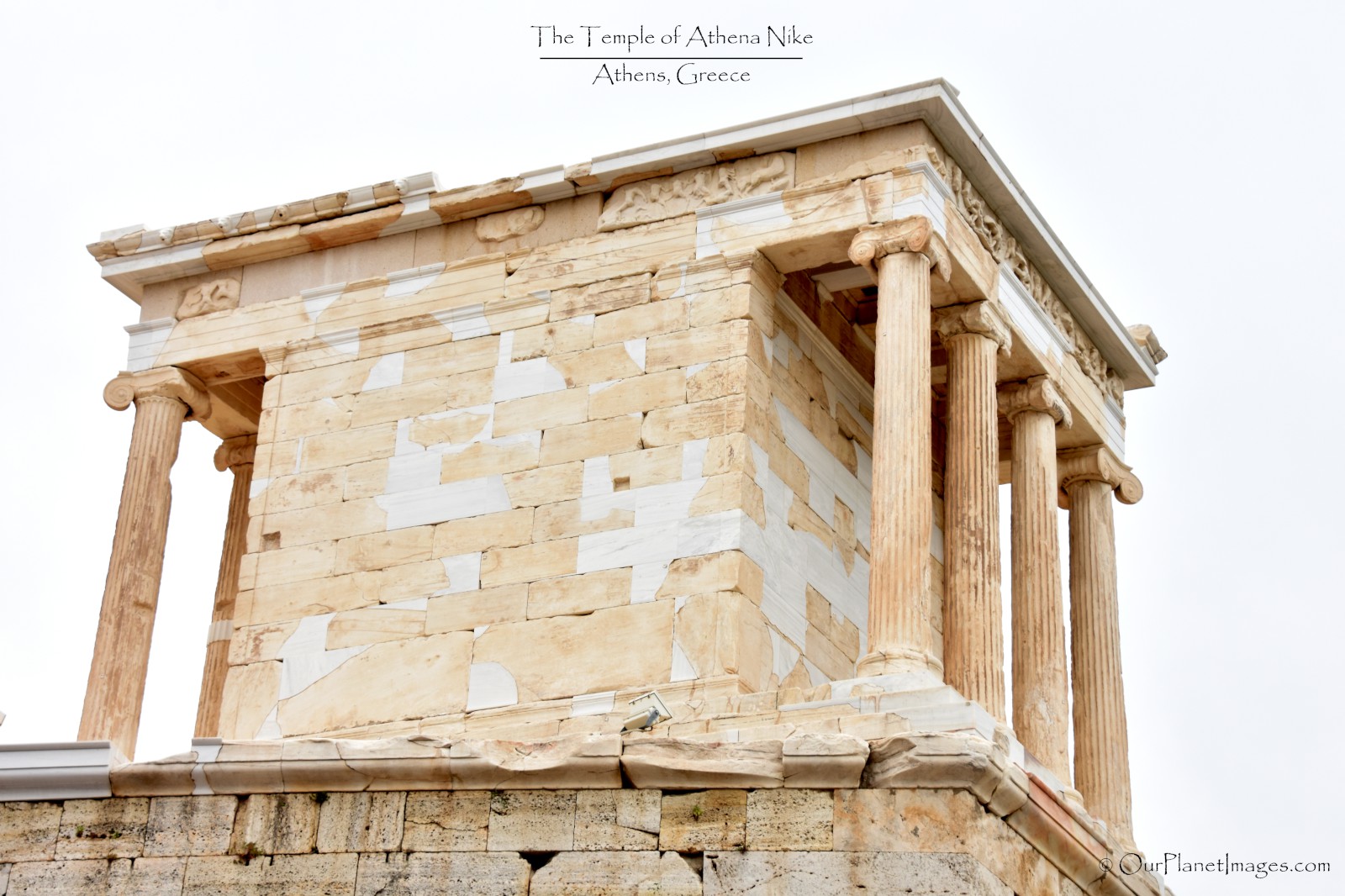
The Parthenon
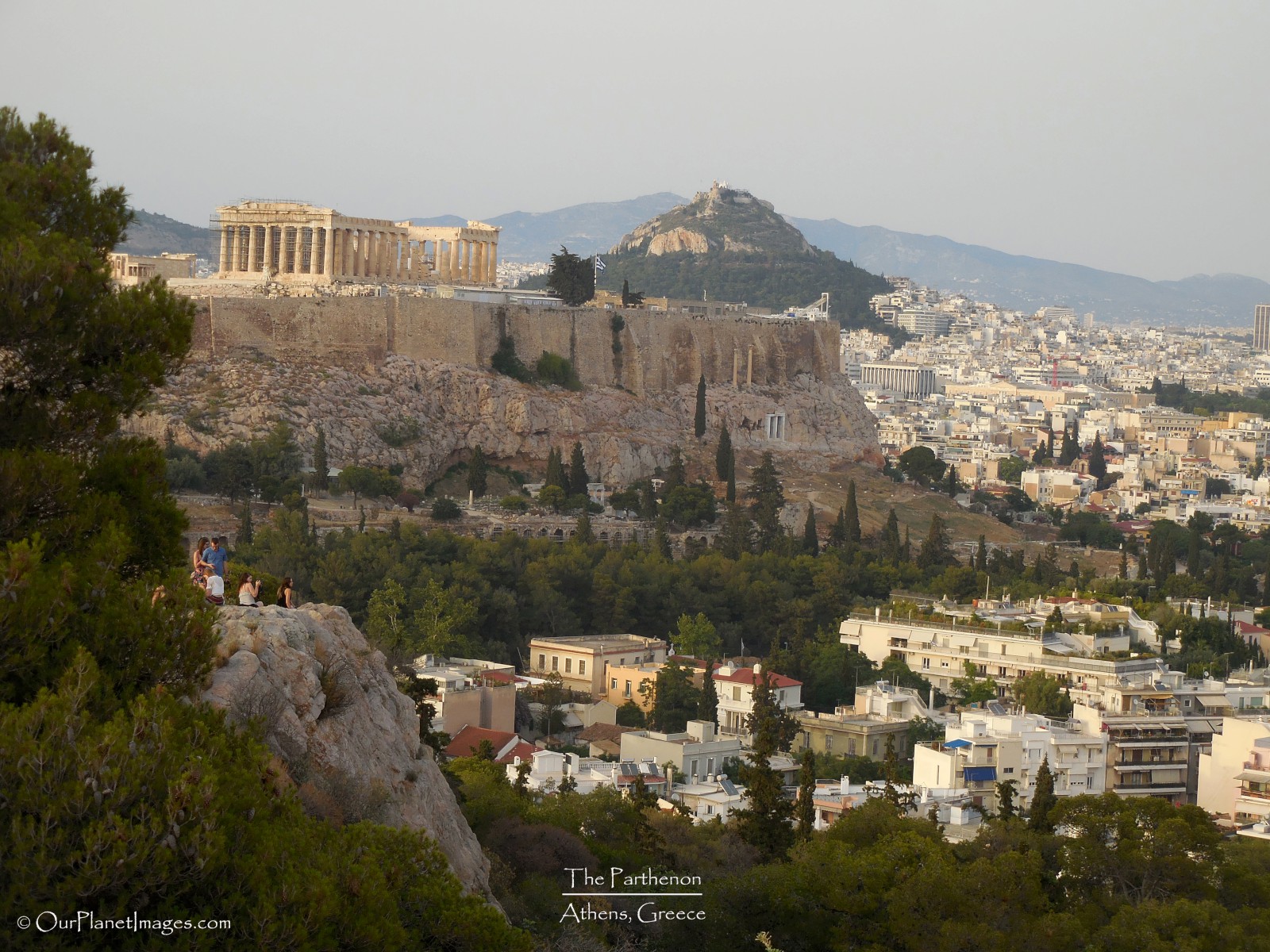
The Parthenon is the symbol of the ancient Greek civilization and it is the most important monument remaining. It was dedicated to Athena, the goddess of the city. The Parthenon was started in 447 B.C. and was completed in 15 years. It housed a treasury and a sanctuary to Athena. The sanctuary held a 12 meter high ivory and gold statue of Athena called the Athena Parthenos.
The building is supported with 17 columns on each side and 8 columns on each end. There are relief carvings on all sides at the top and there are sculptures under the edge of the roof at each end.
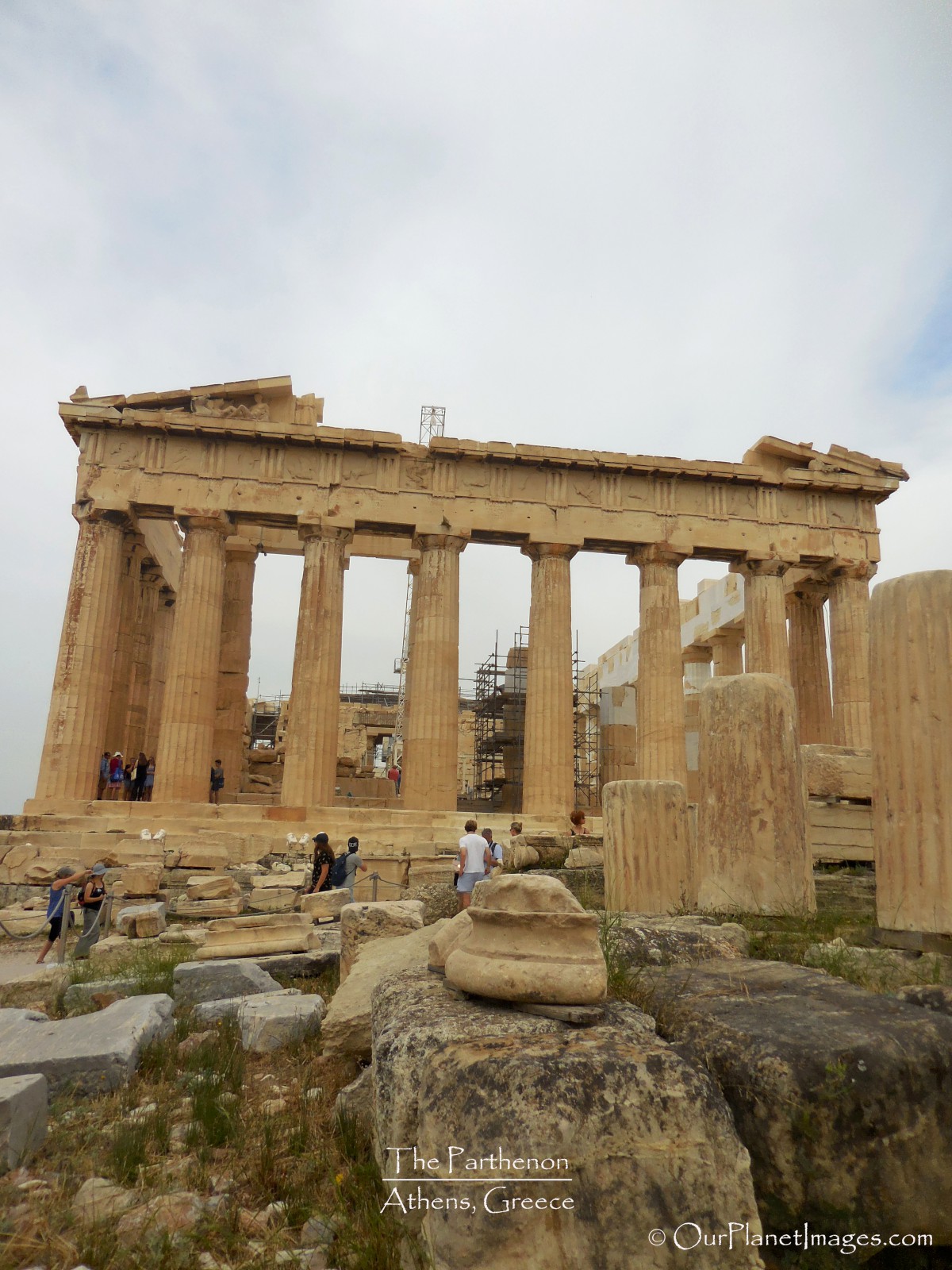
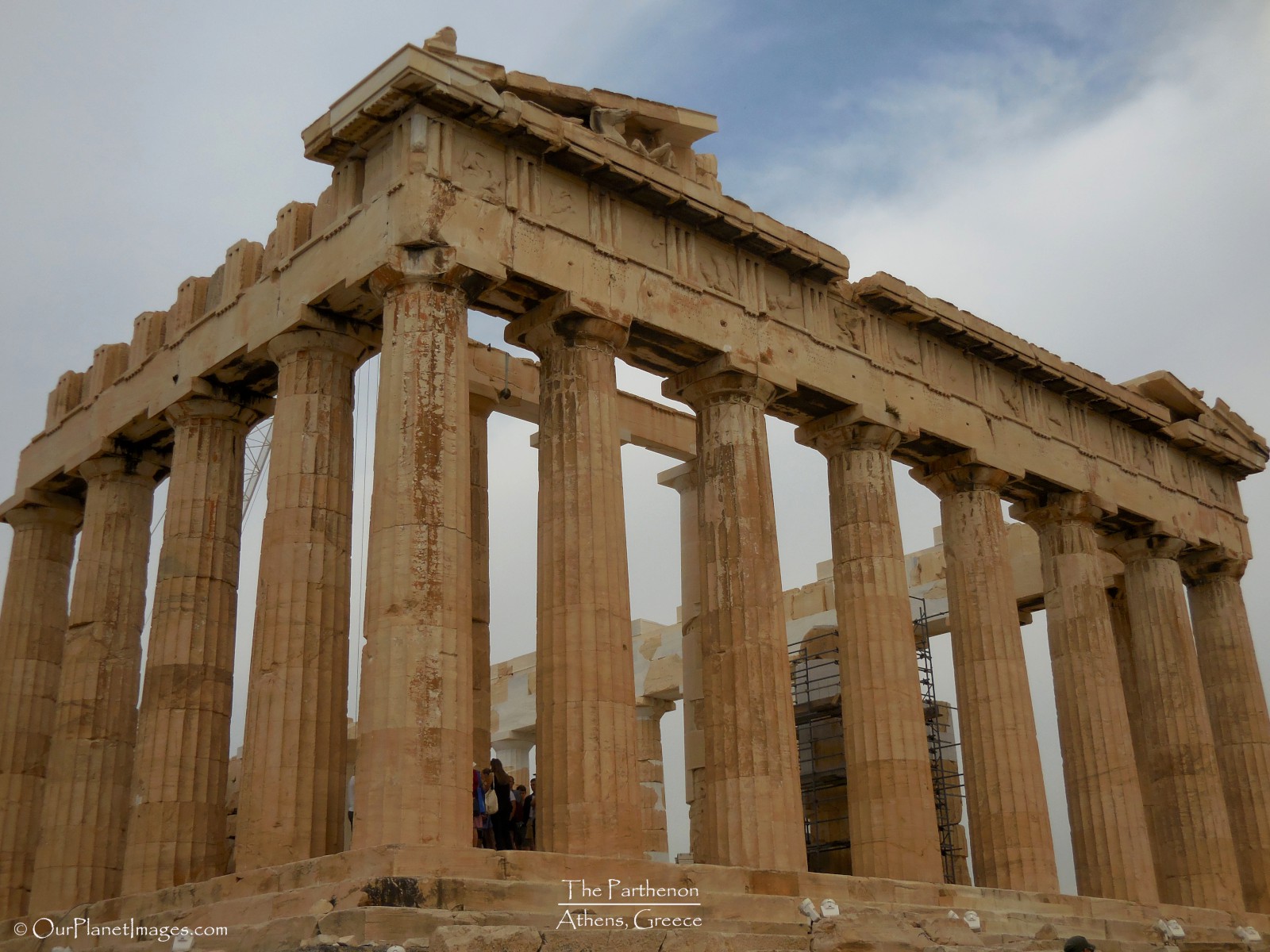
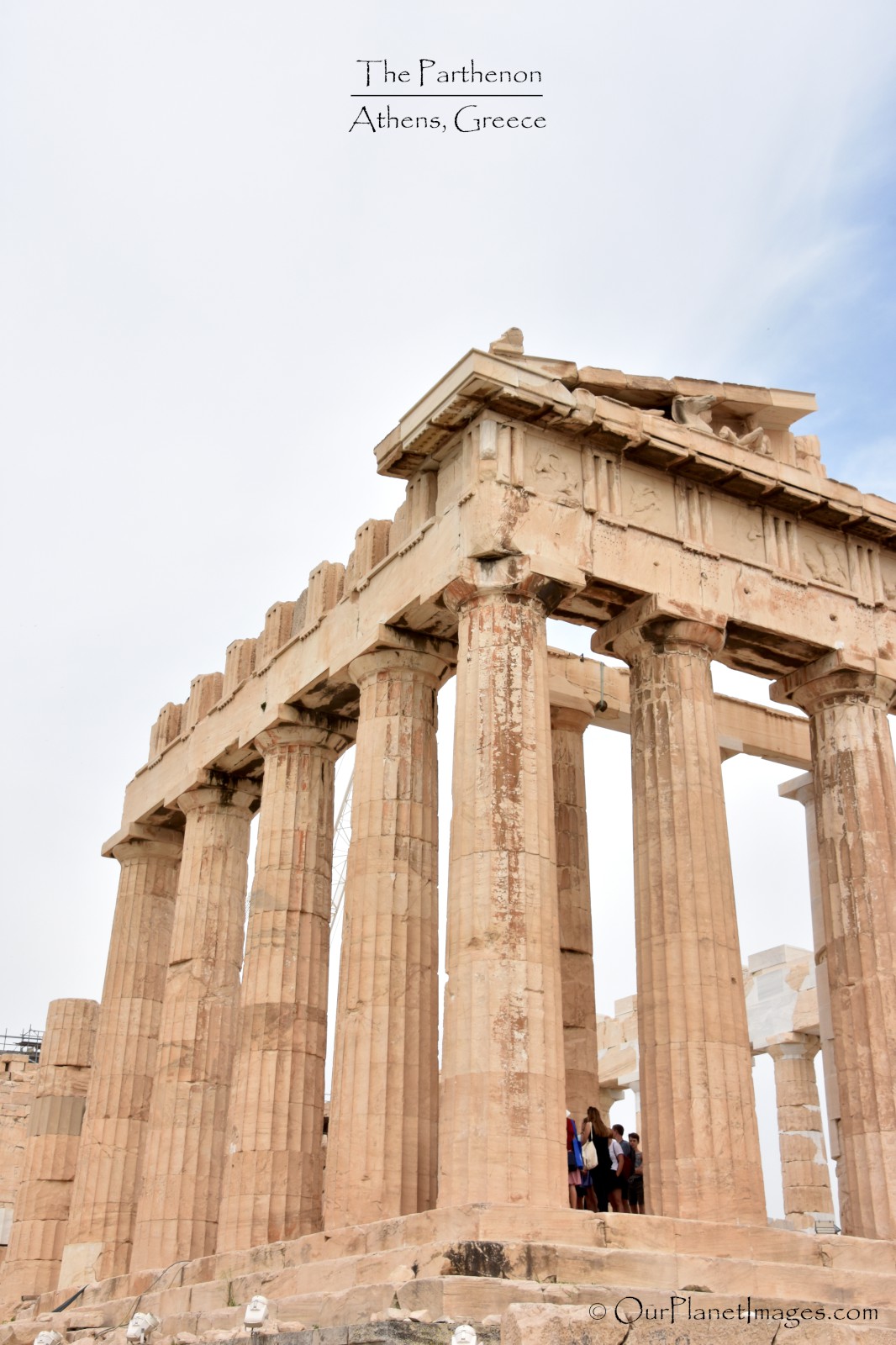
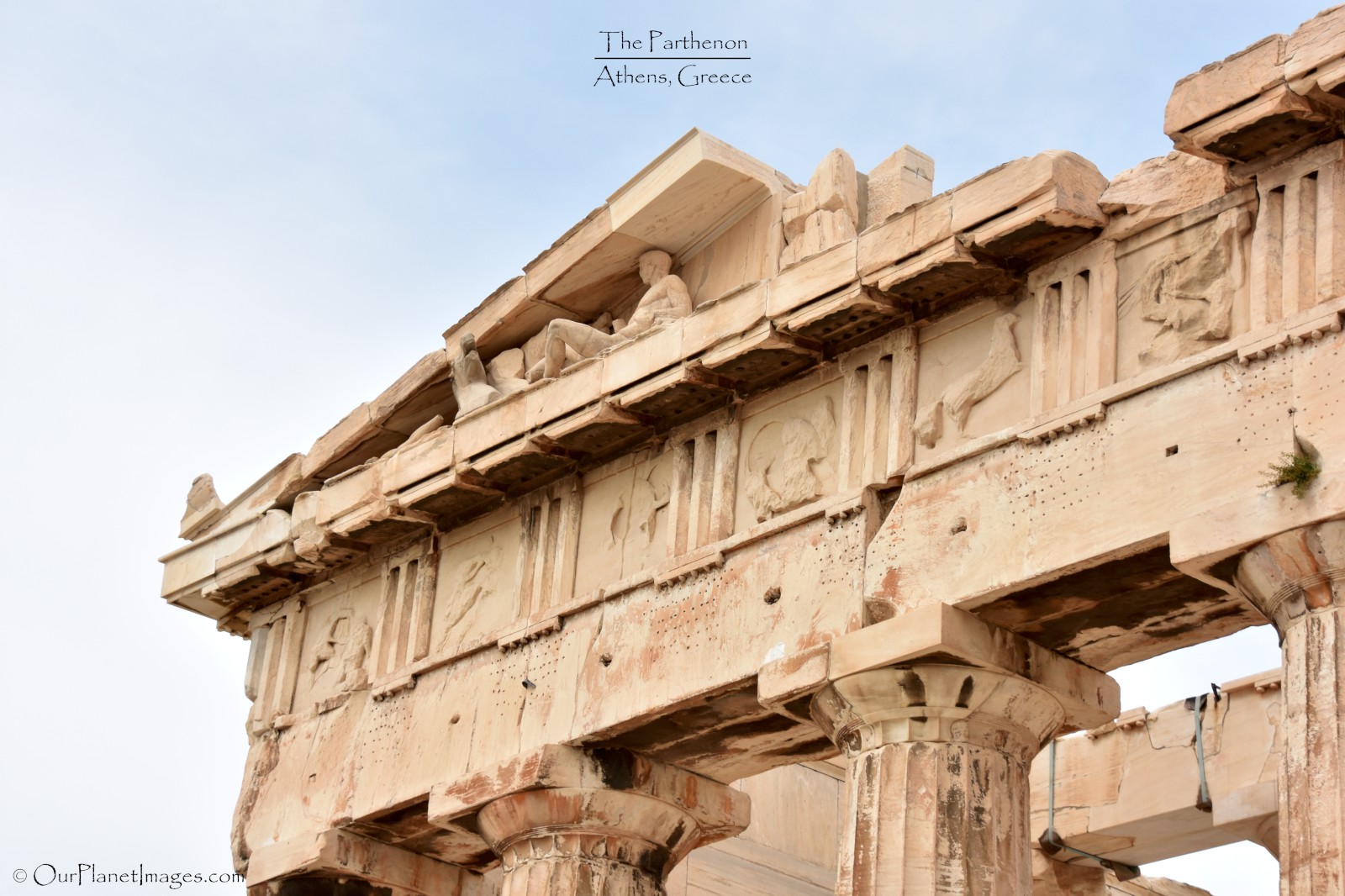
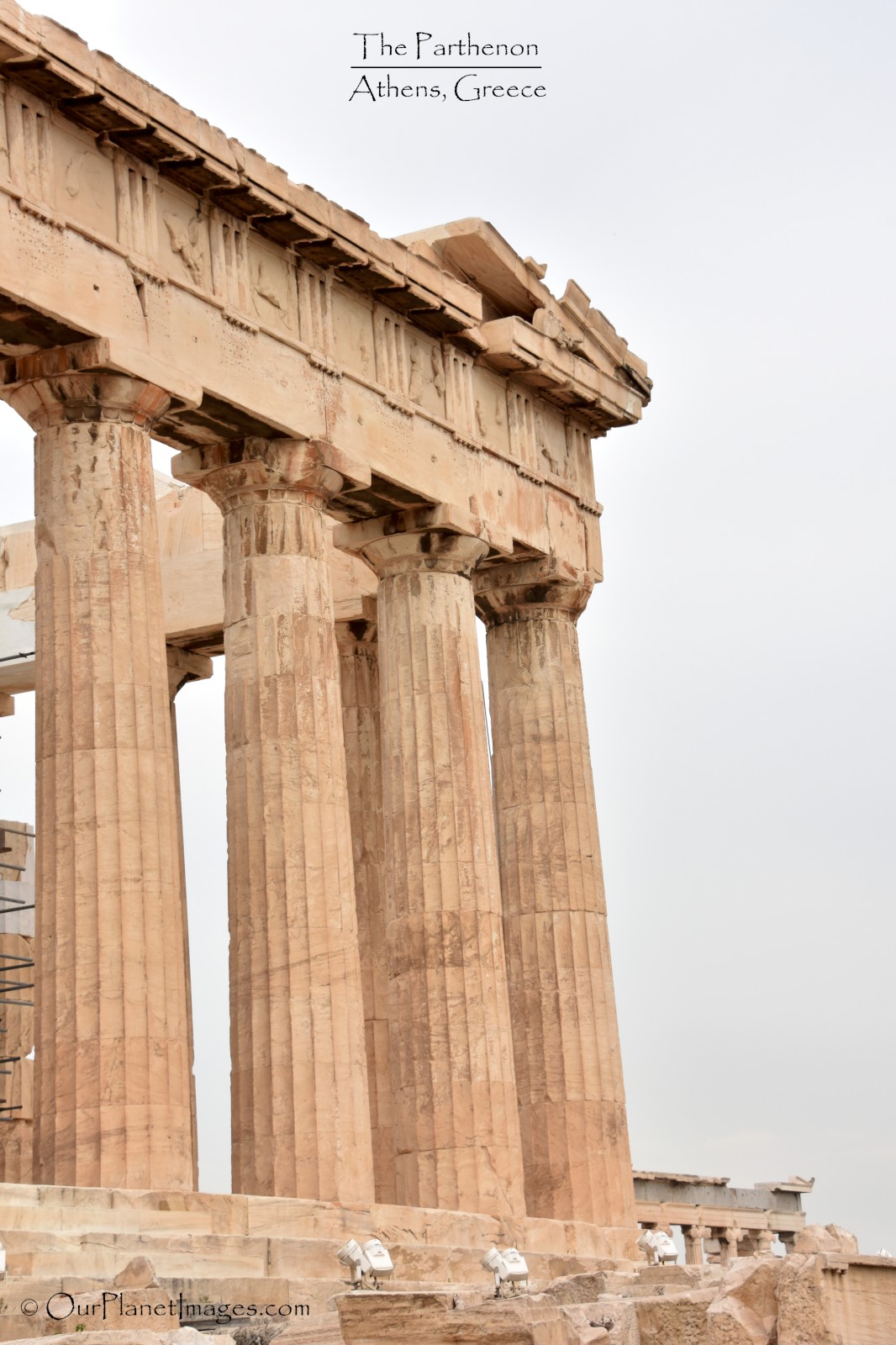
As you can tell from some of the pictures above, the building is being reassembled and will be for many years because each piece of the Parthenon is unique and fits together like a huge multi-ton jigsaw puzzle.
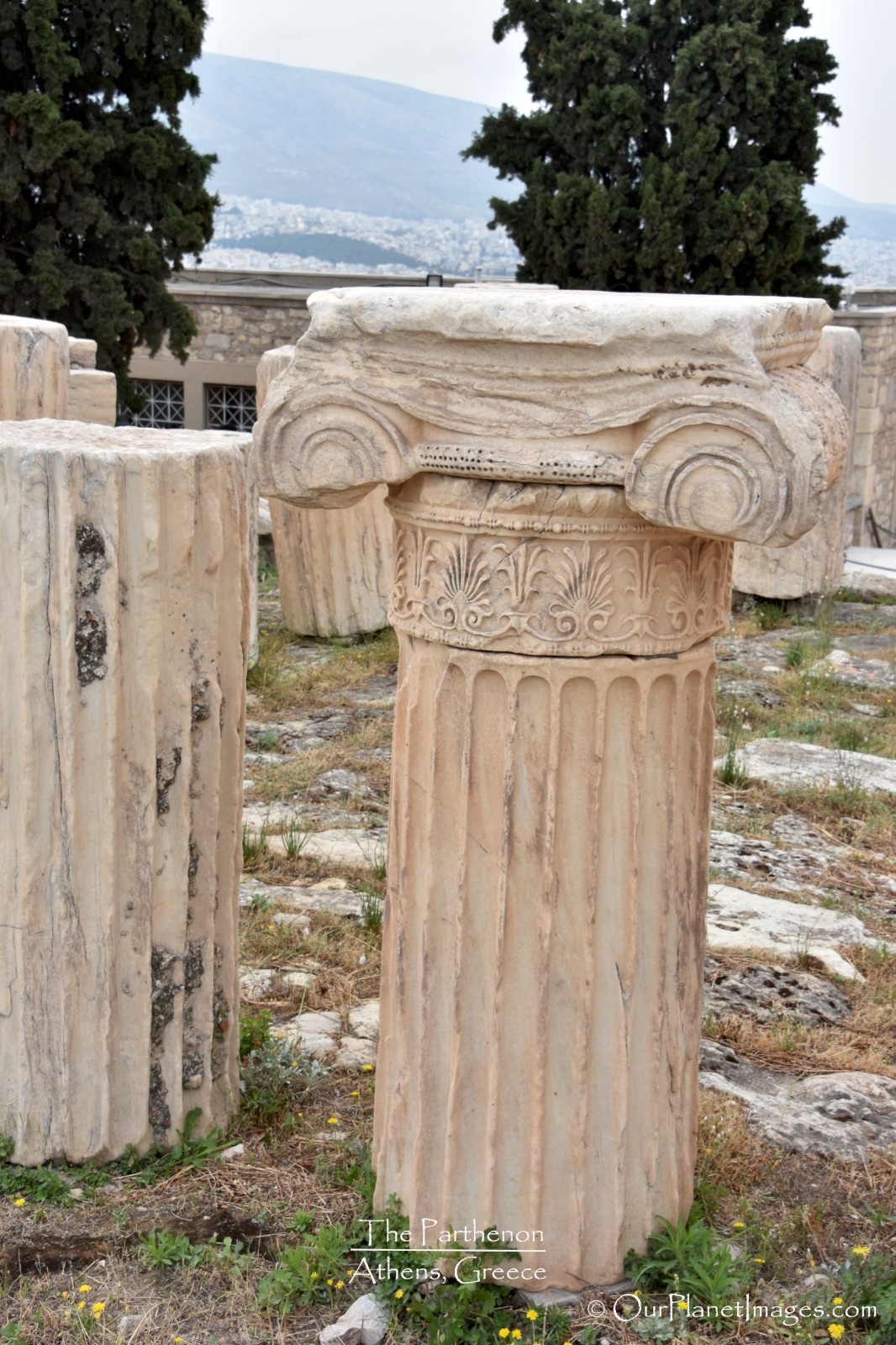
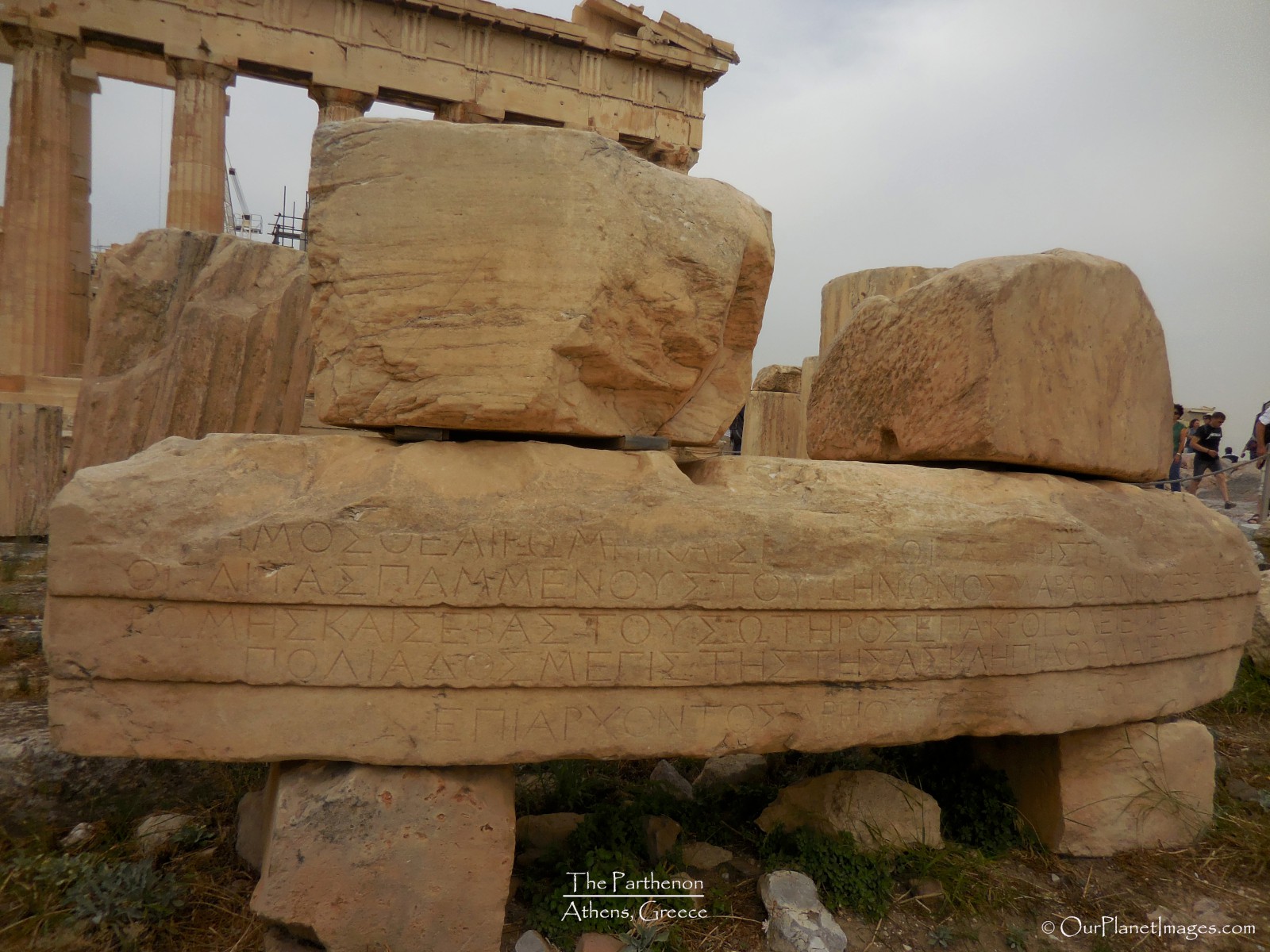
The 3 photos below show the look of the Parthenon in full daylight and the transition into darkness.
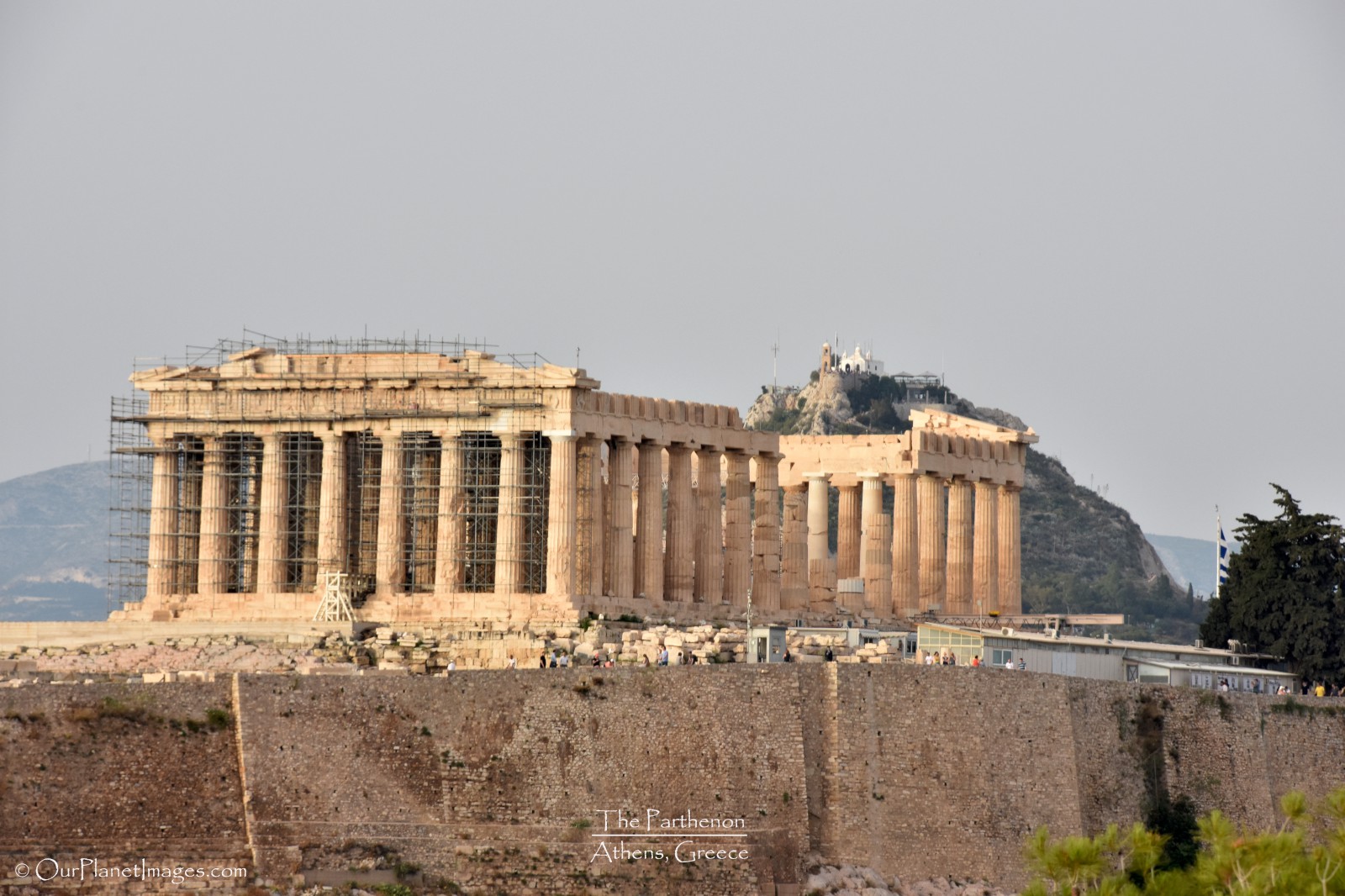
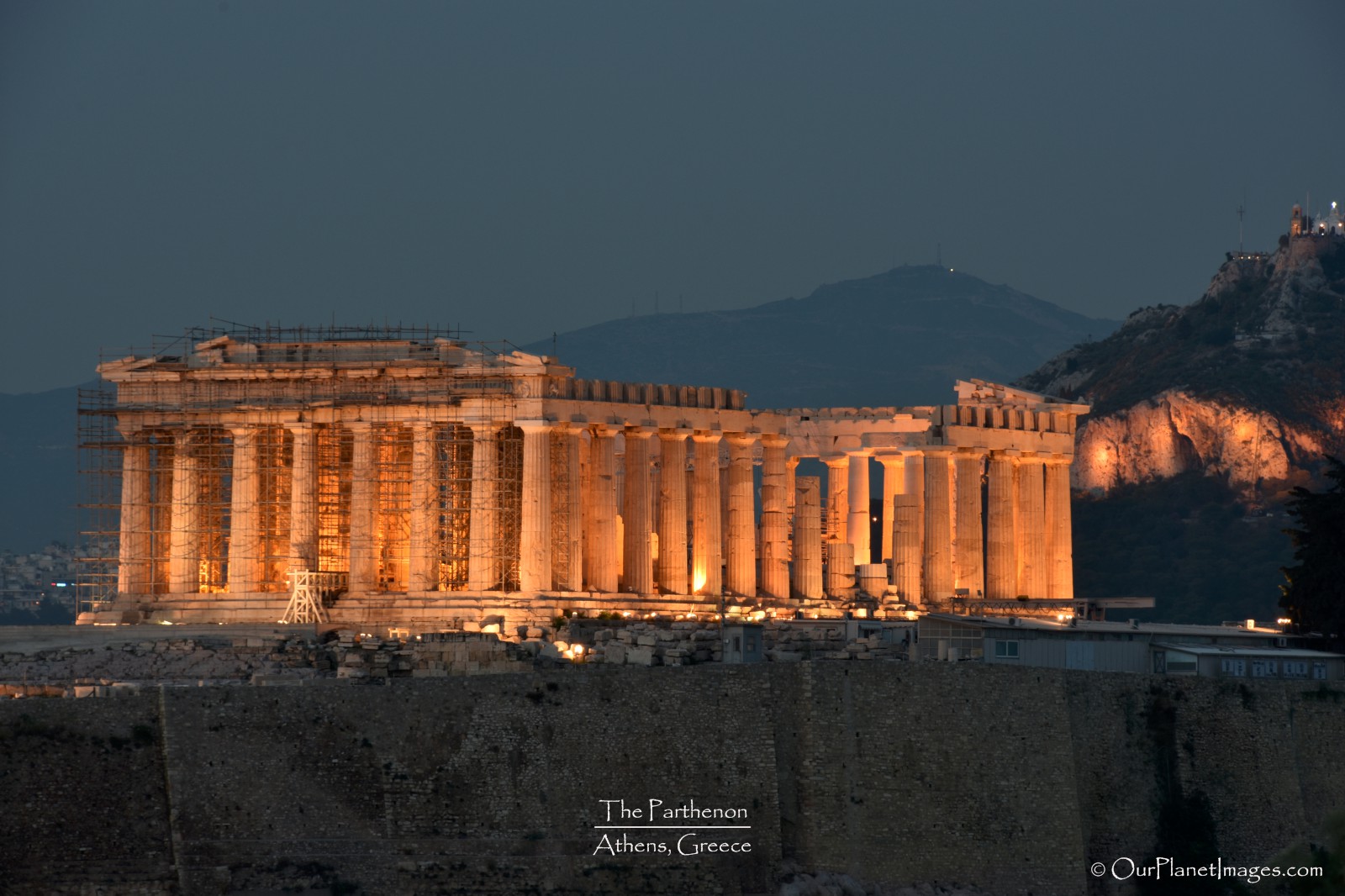
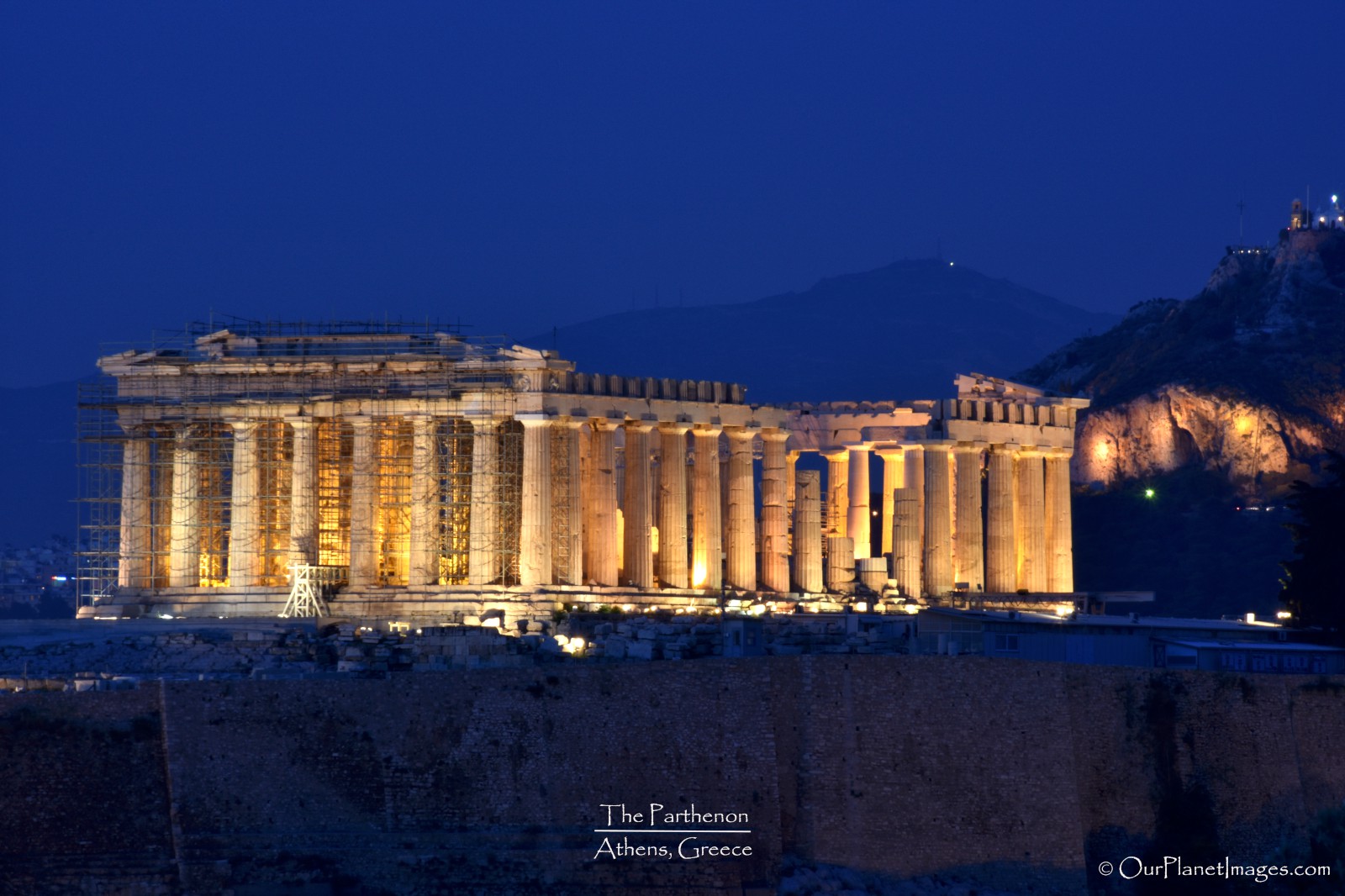
The Erectheion

The above photo show the Parthenon on the right and the Erectheion on the left. The Erectheion is an ancient Greek temple which was dedicated to both Athena and Poseidon.
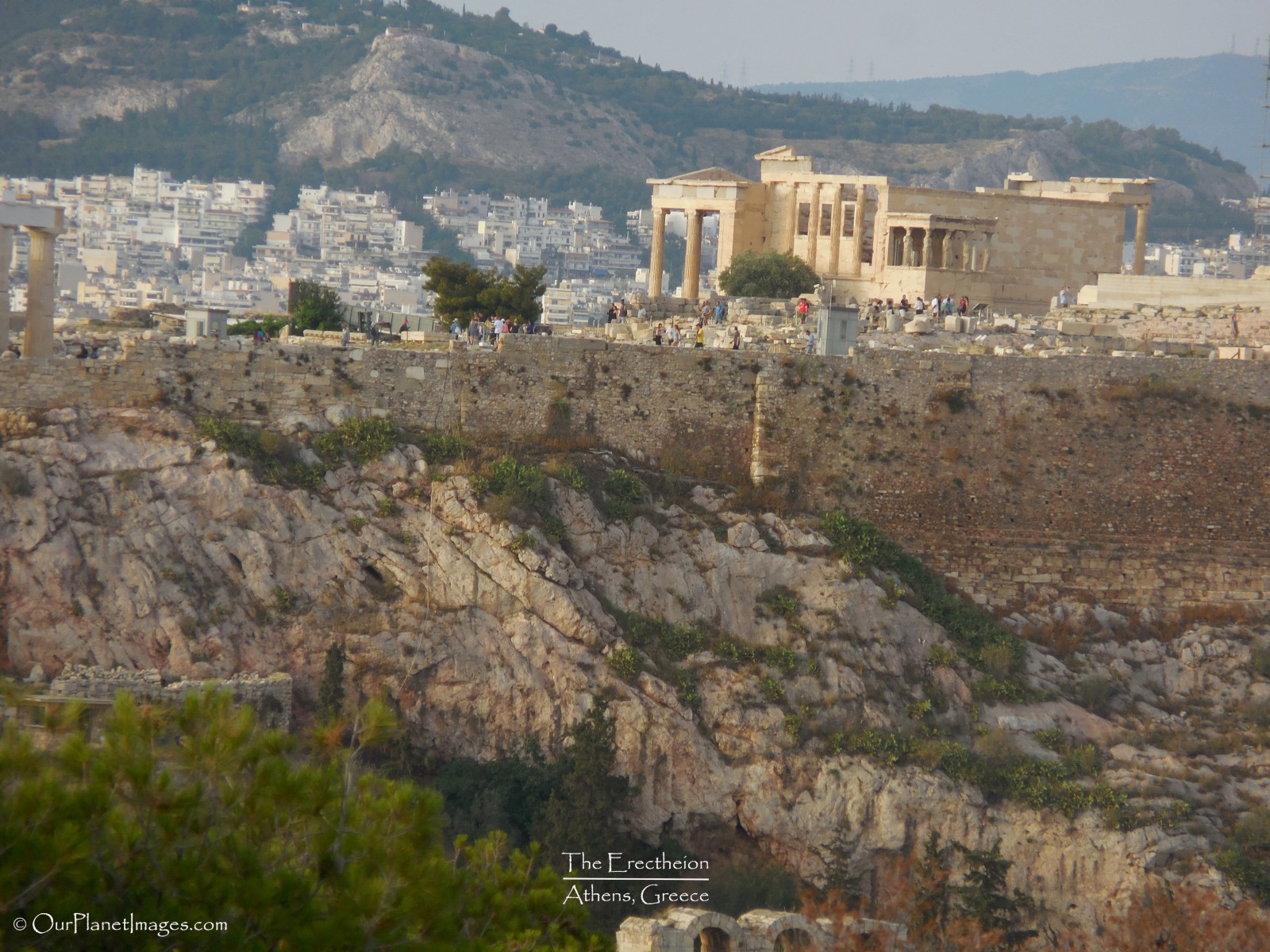
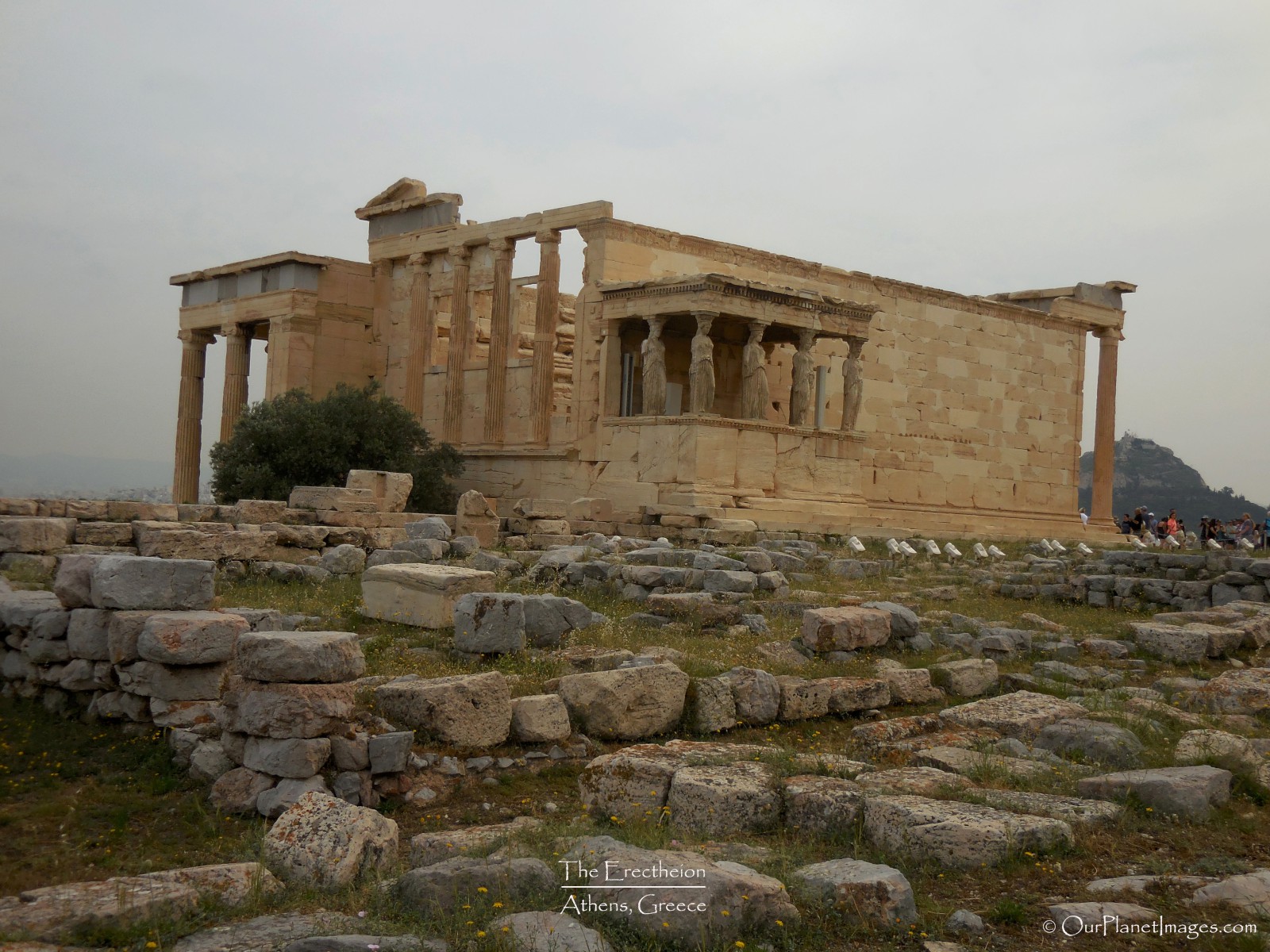
The building got its name after Poseidon killed Erechtonius, a mythical king who had the body of a snake. It has three separate areas which are the main temple, the northern and southern porches. The temple is the sanctuary where the ceremonies of Poseidon and Athena took place. The two photos below shown the columns of the main temple and the southern porch.
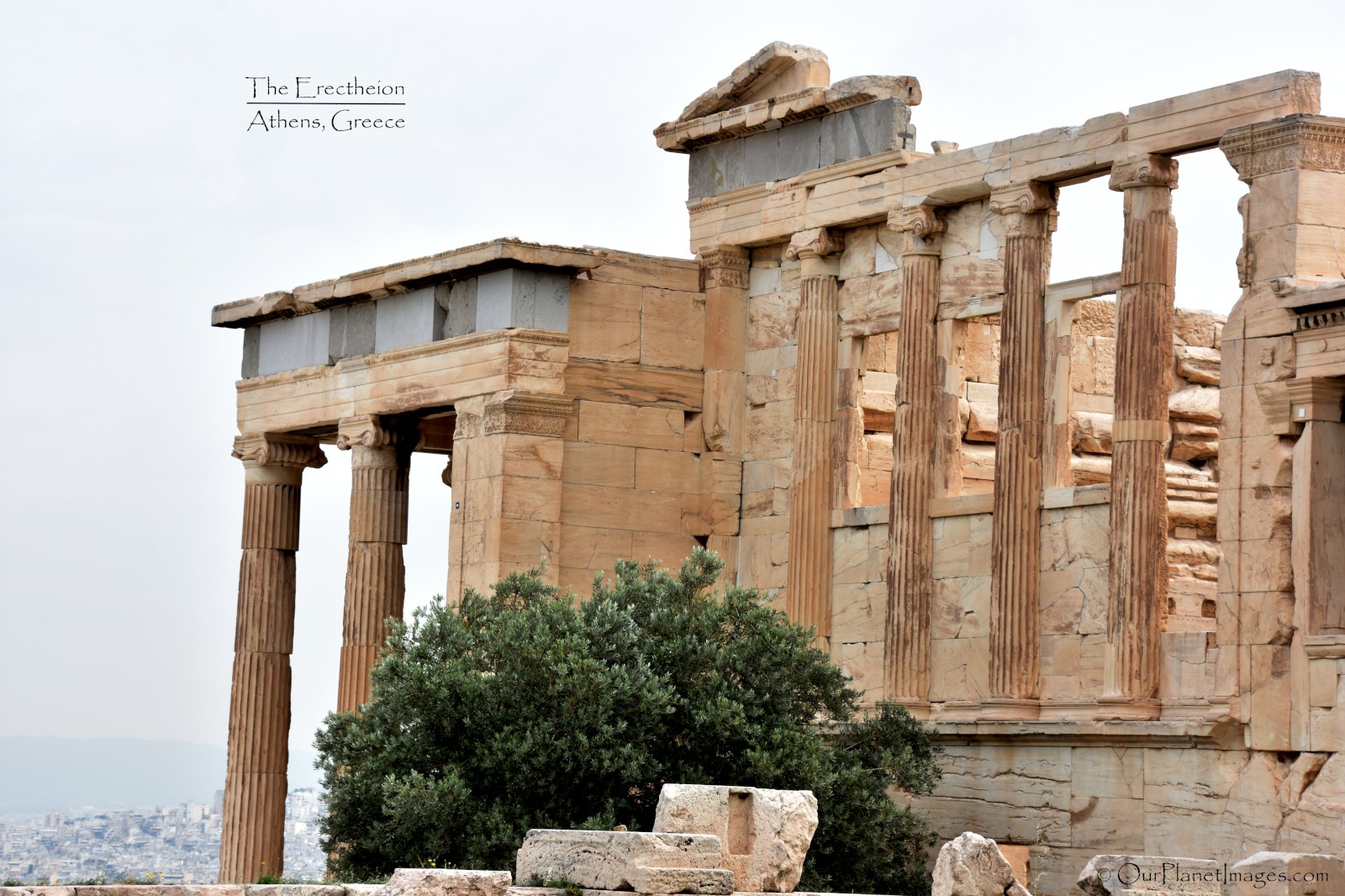
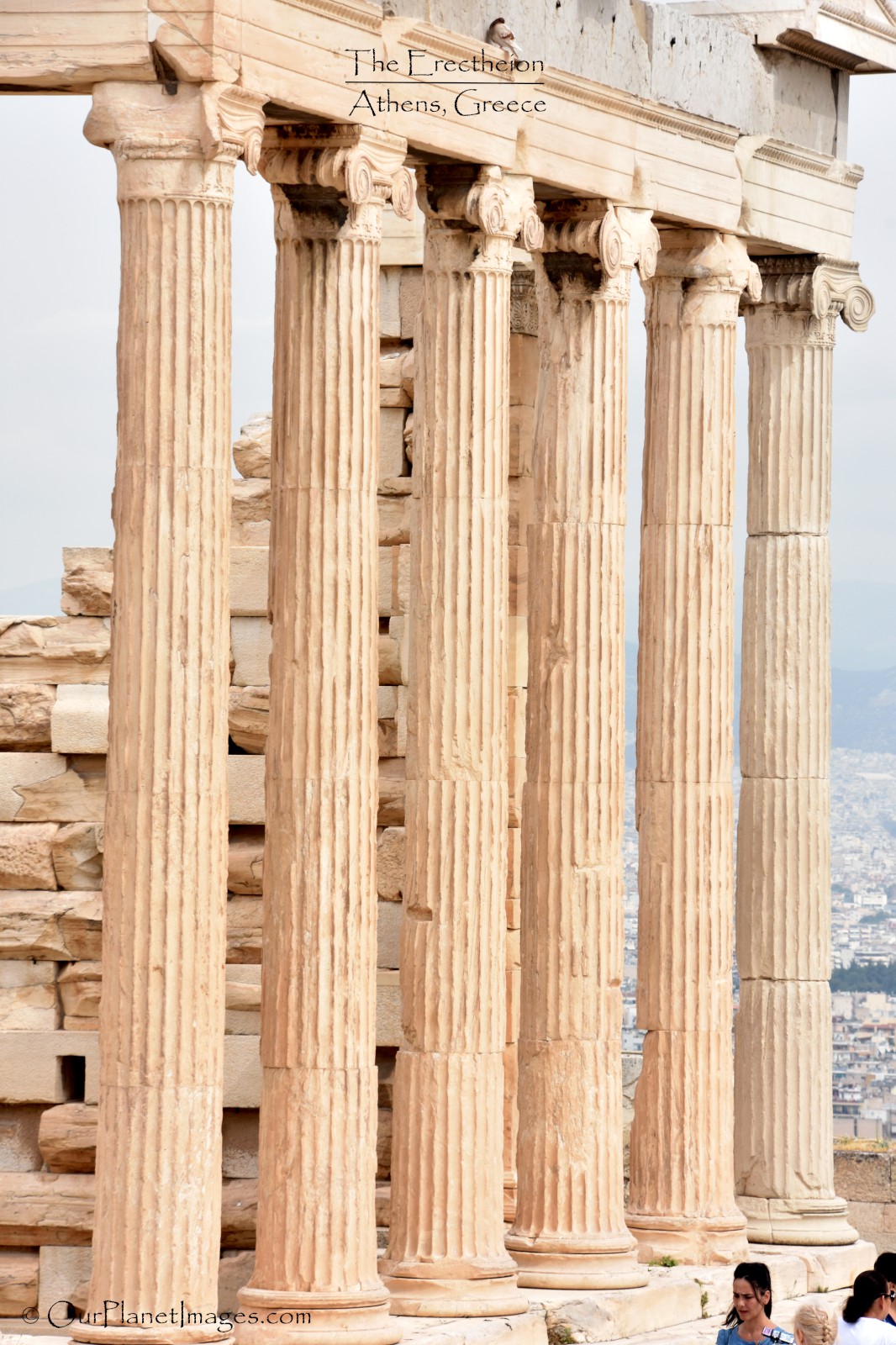
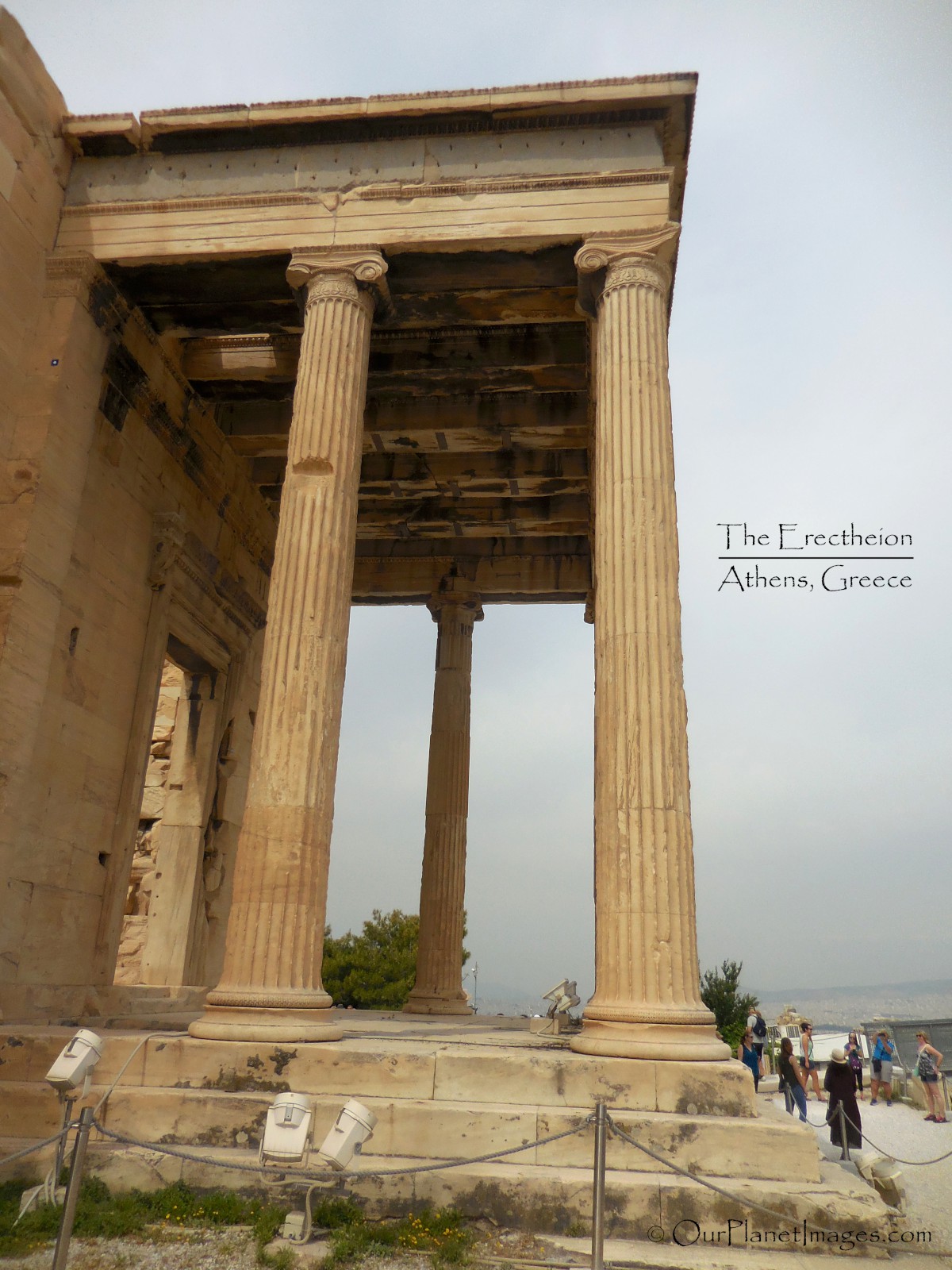
The northern porch is the most famous because the porch columns are sculptures of six women. The sculptures were modeled after six young women from the village of Karyes on the Peloponnese peninsula. This is the porch where the sacred olive tree grew, a gift to the city from Athena.
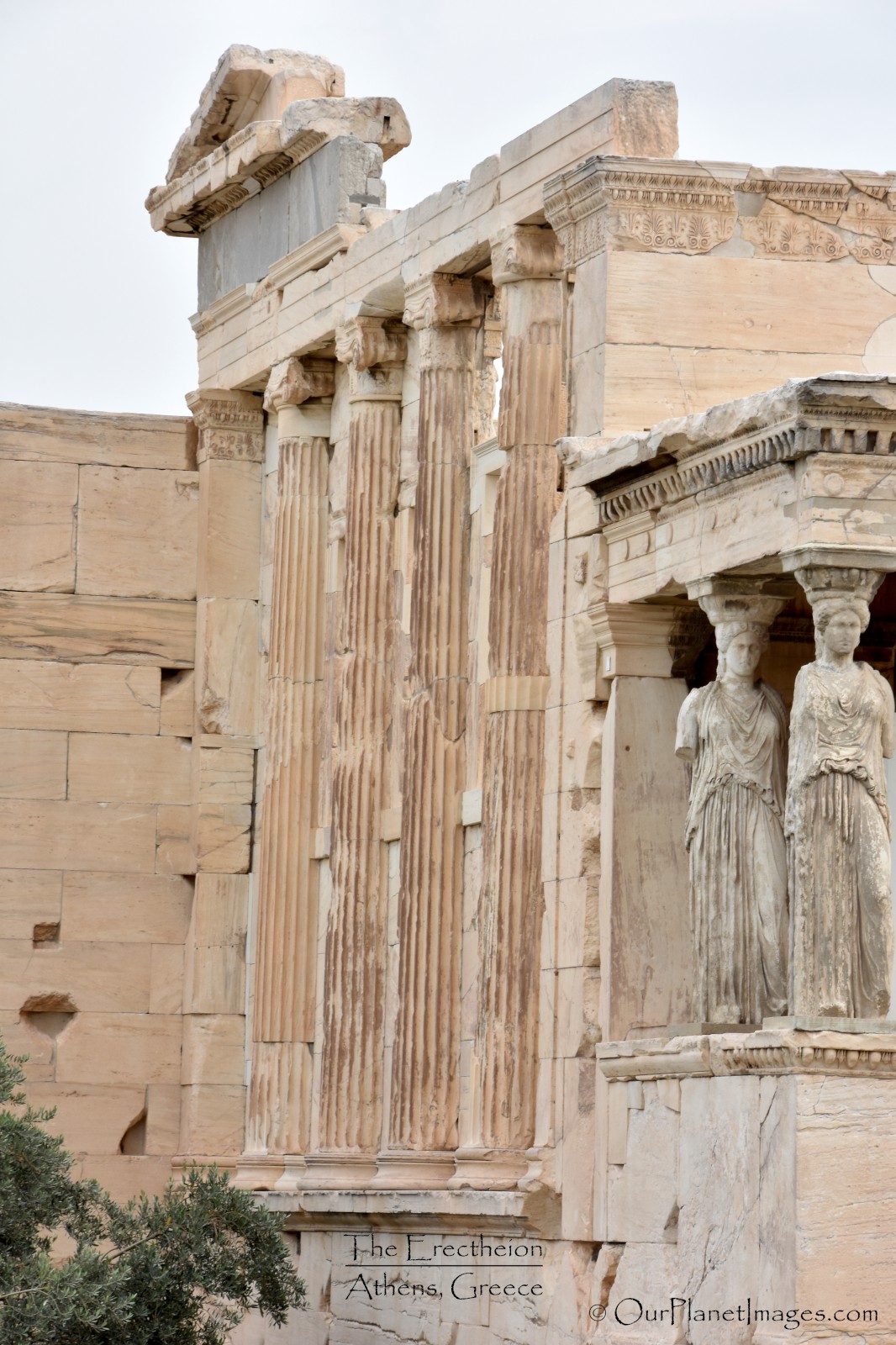
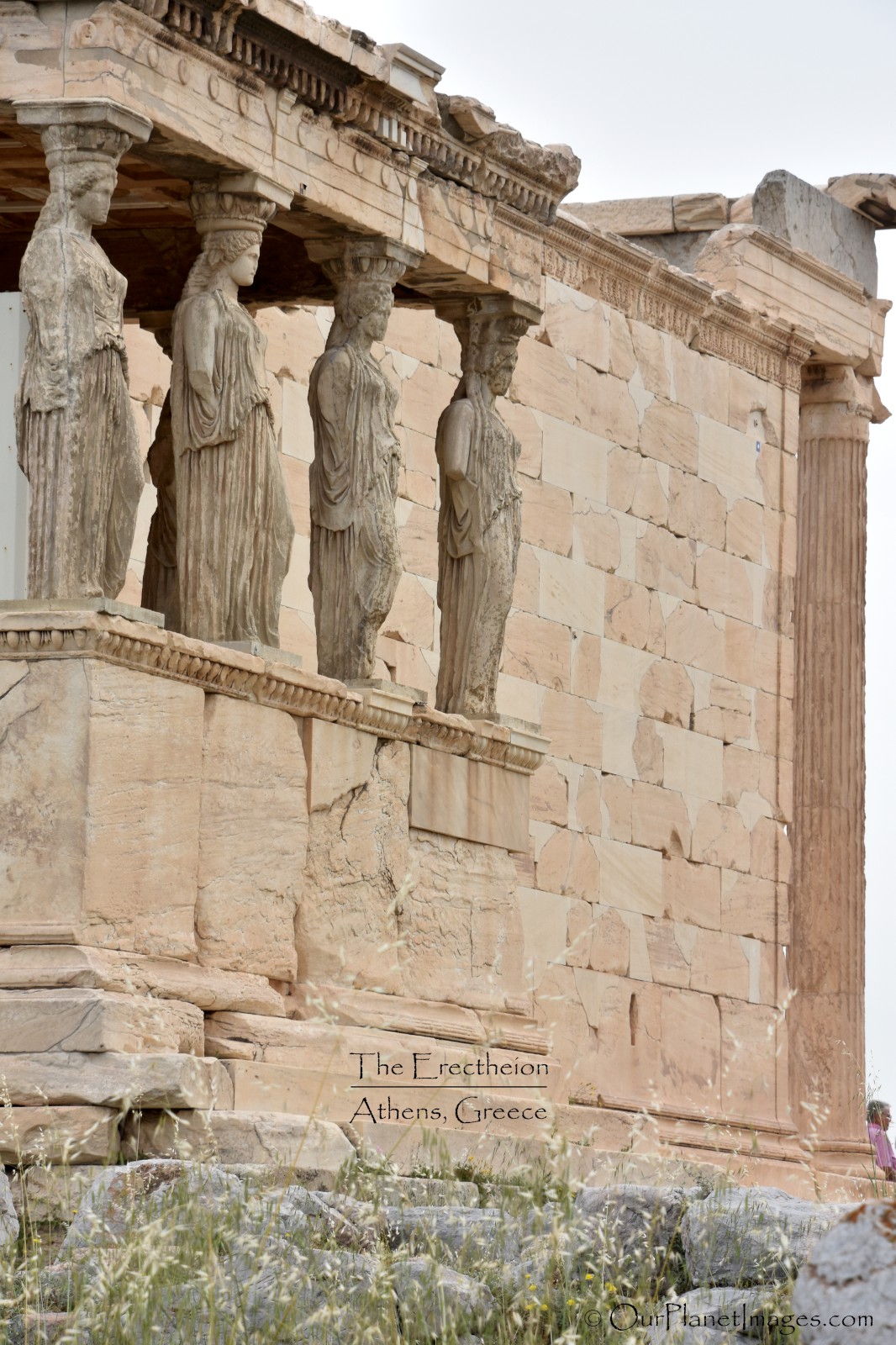
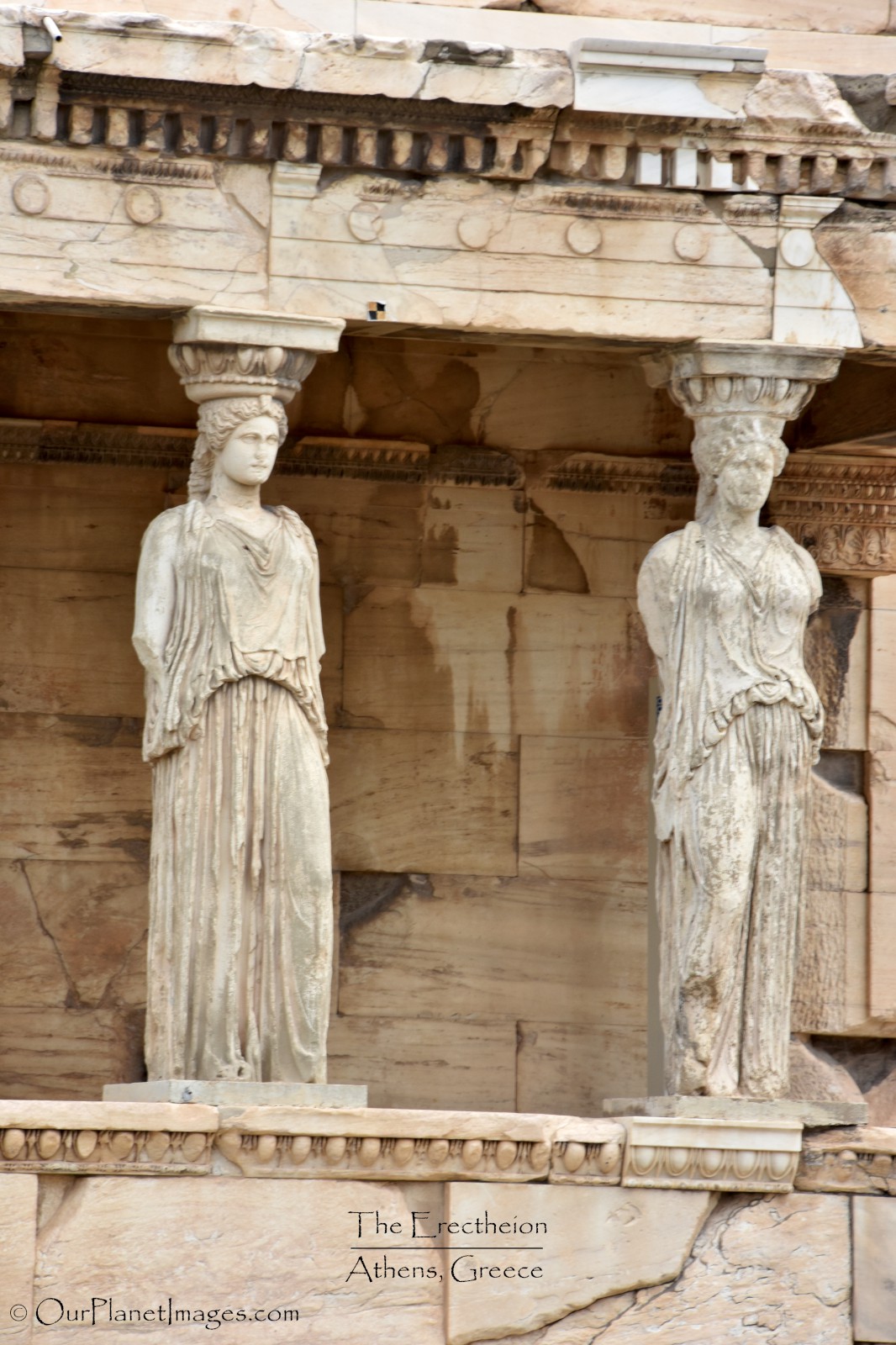
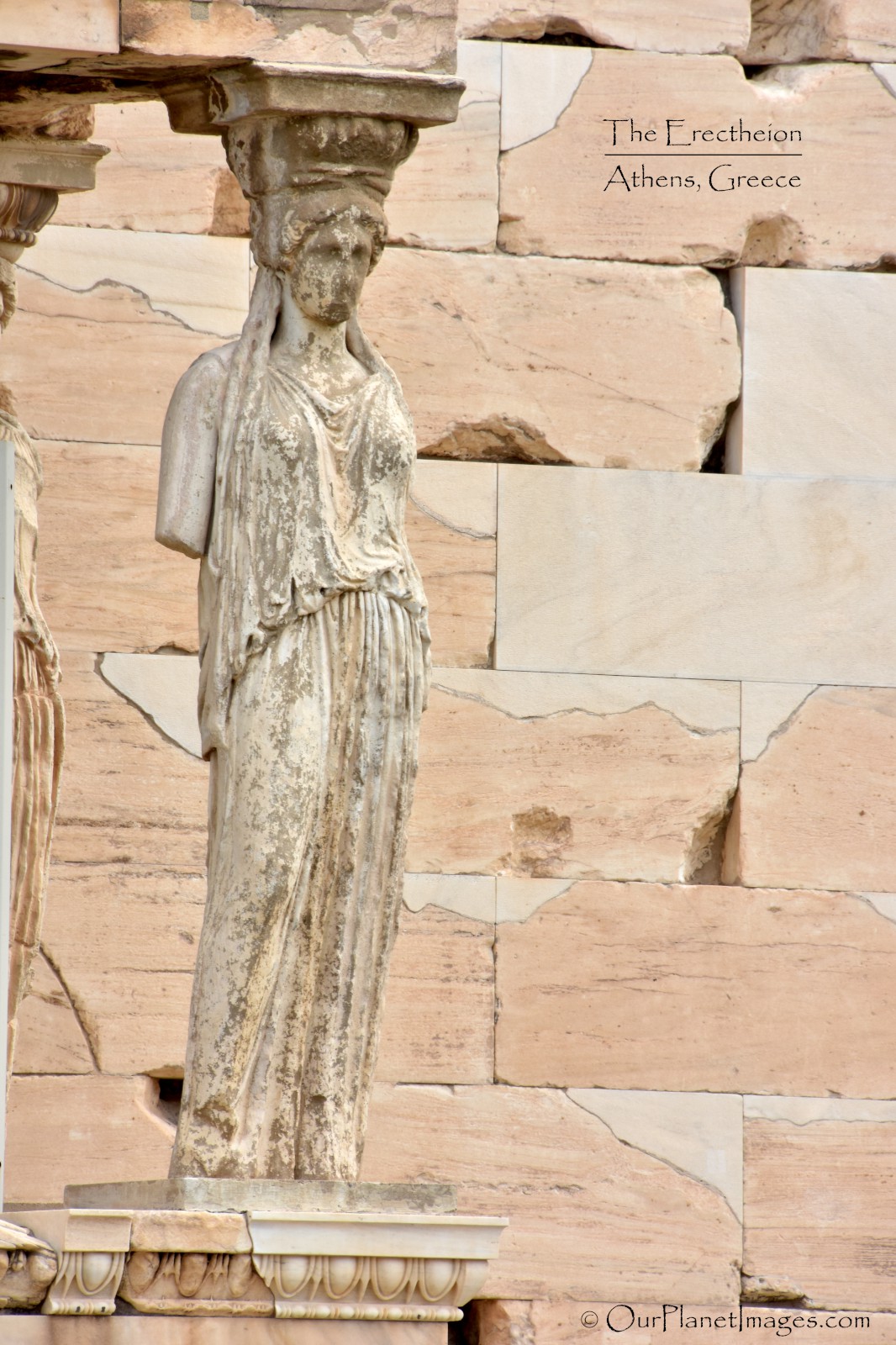
The Theater of Dionysus
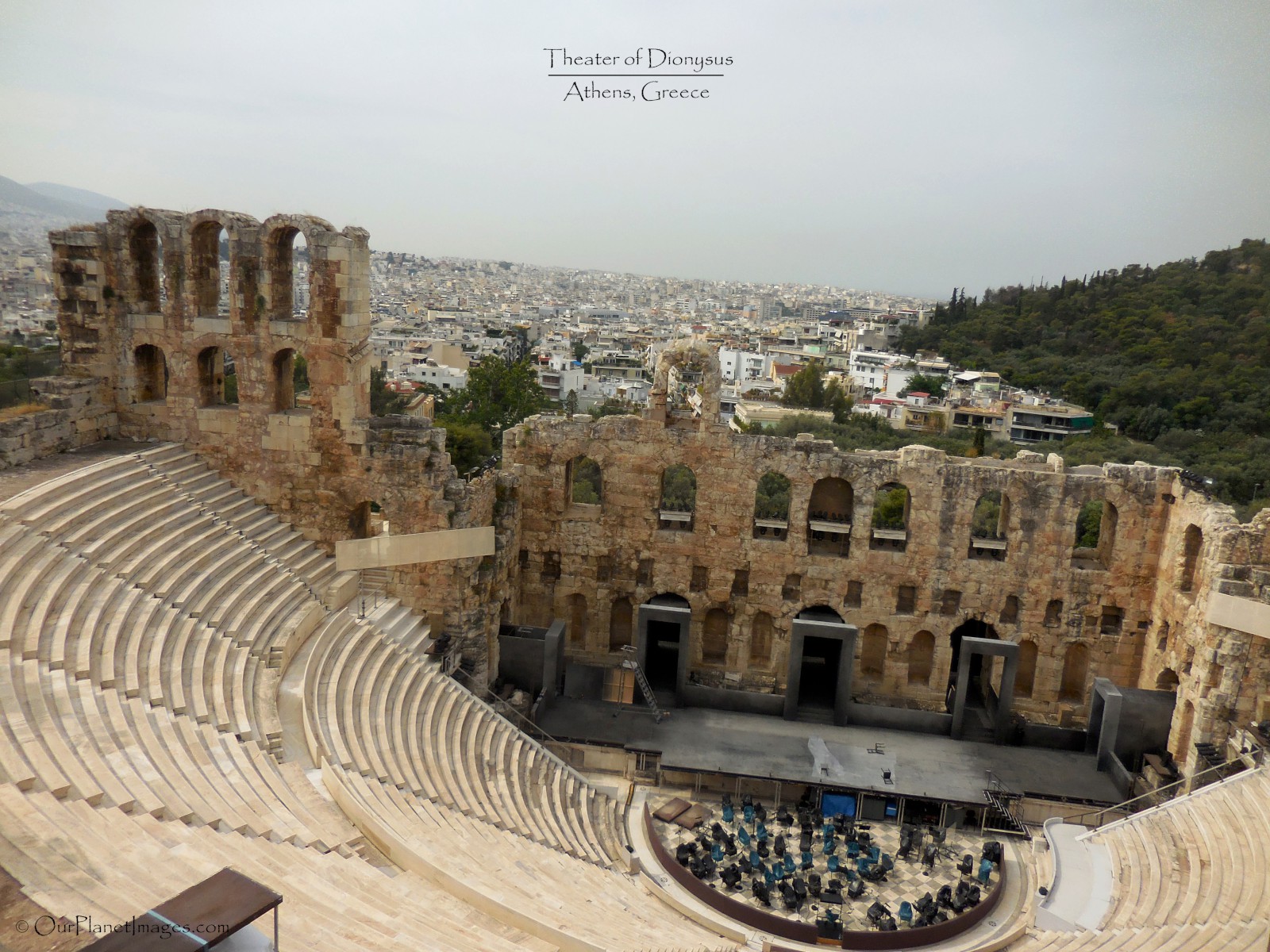
The theater of Dionysus is not actually on top of the acropolis but on the side of the acropolis. The theater was built at the time when theater was first being created and is the place where European theater had its beginnings. It is thought that the first drama was presented in about 530 B.C. by Thespis (which is where the word “Thespian” comes from).
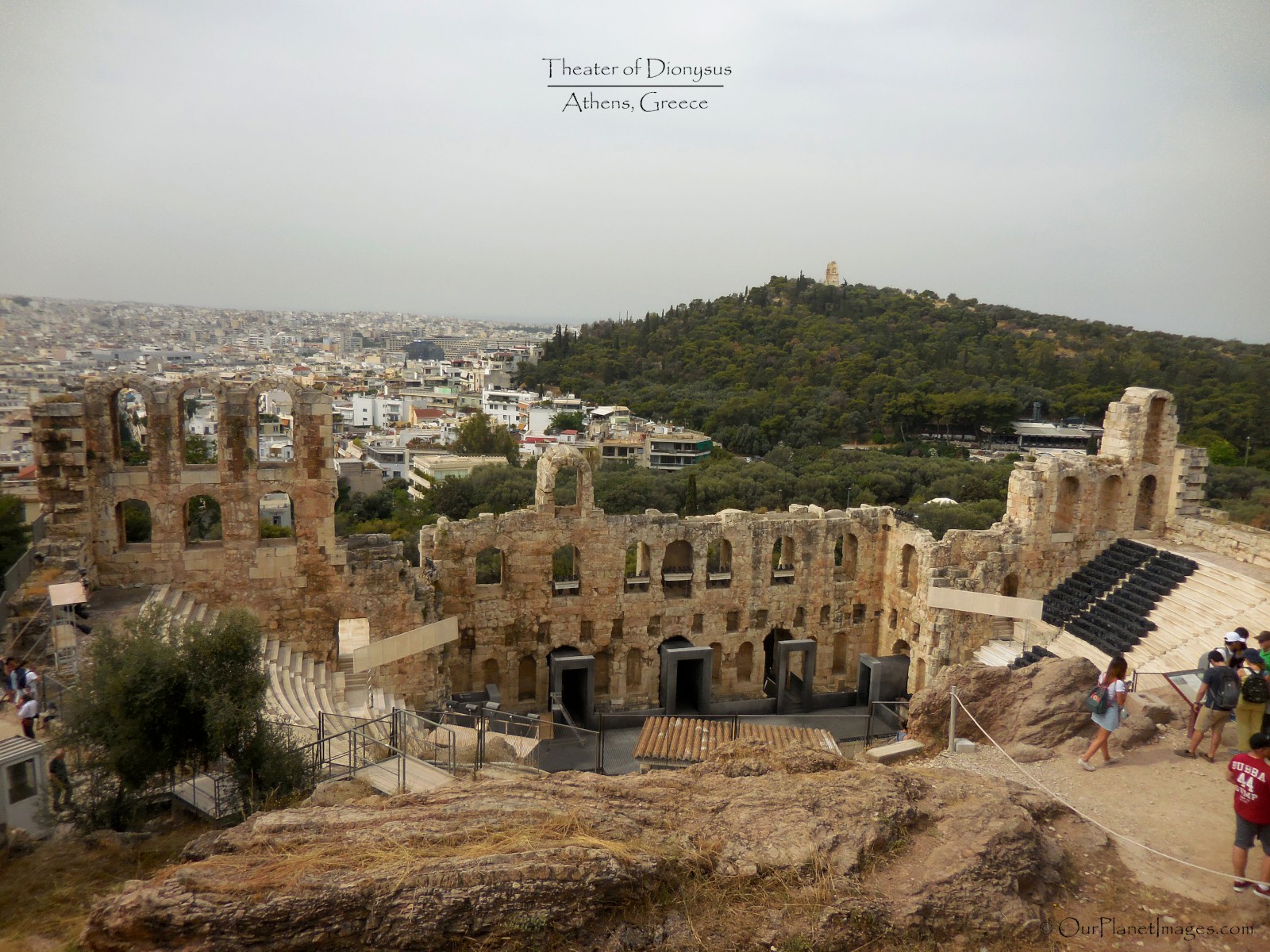
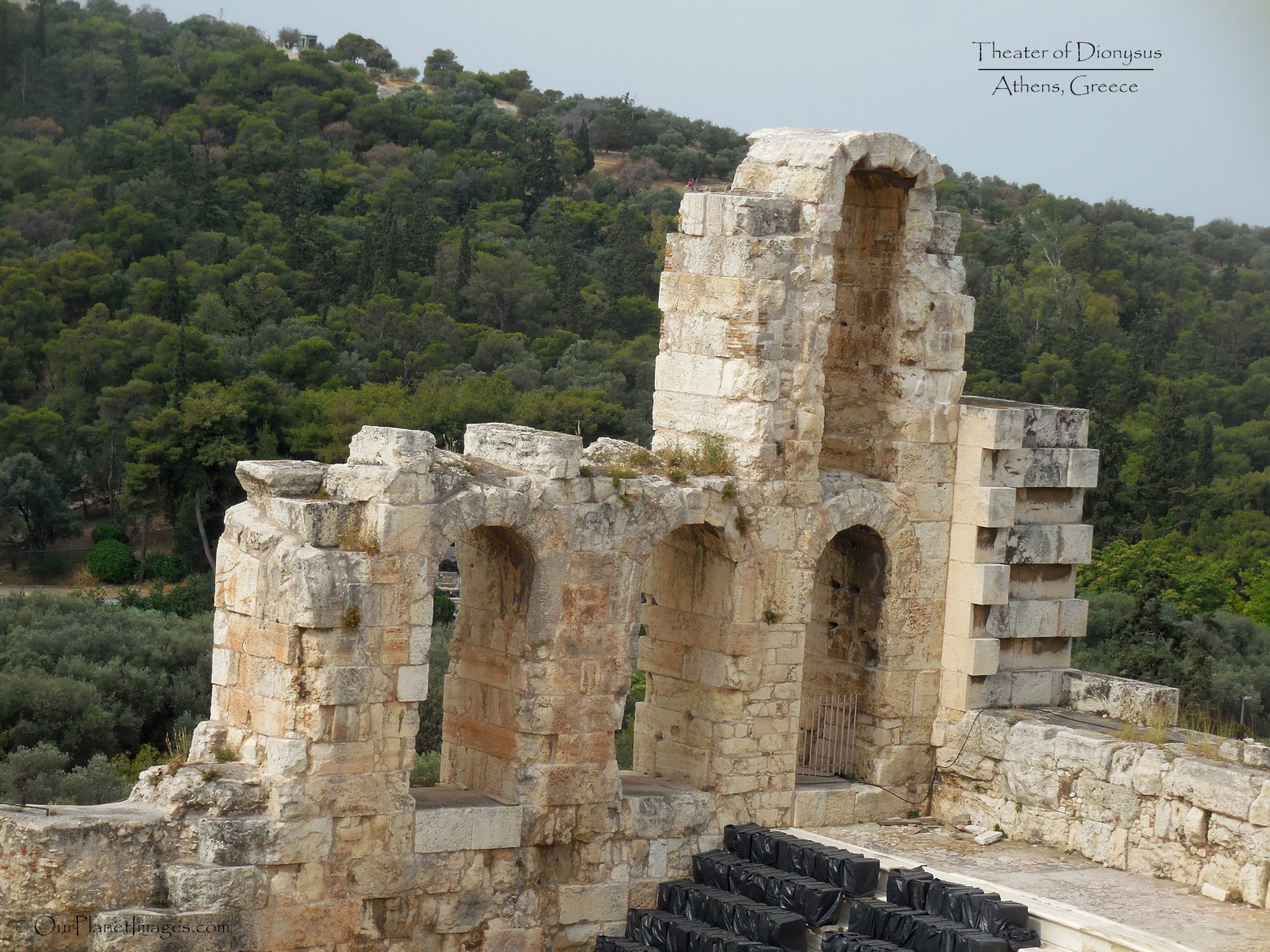
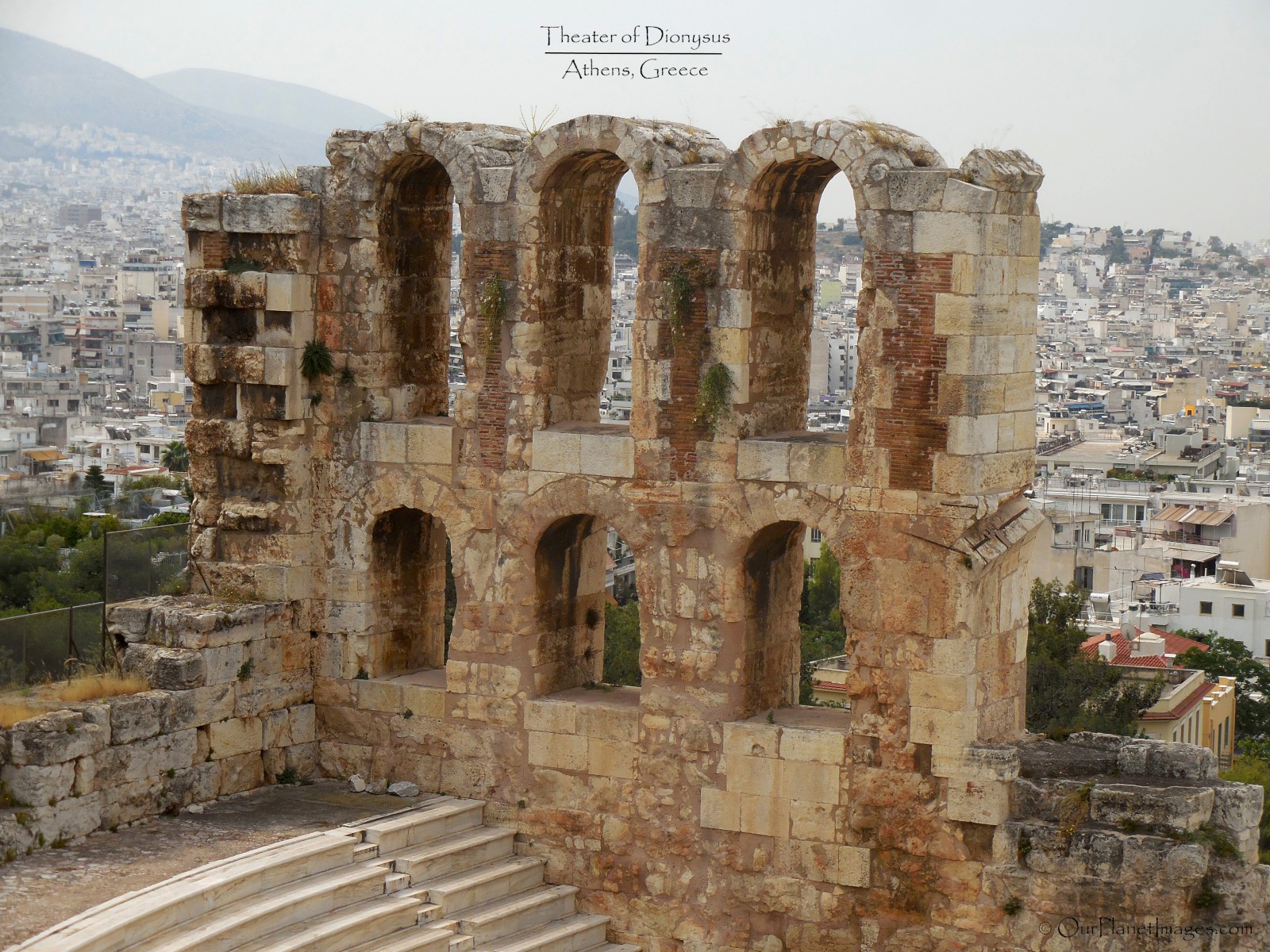
After highlighting the five structures in detail, I want to close with one final photo that shows the Acropolis of Athens.
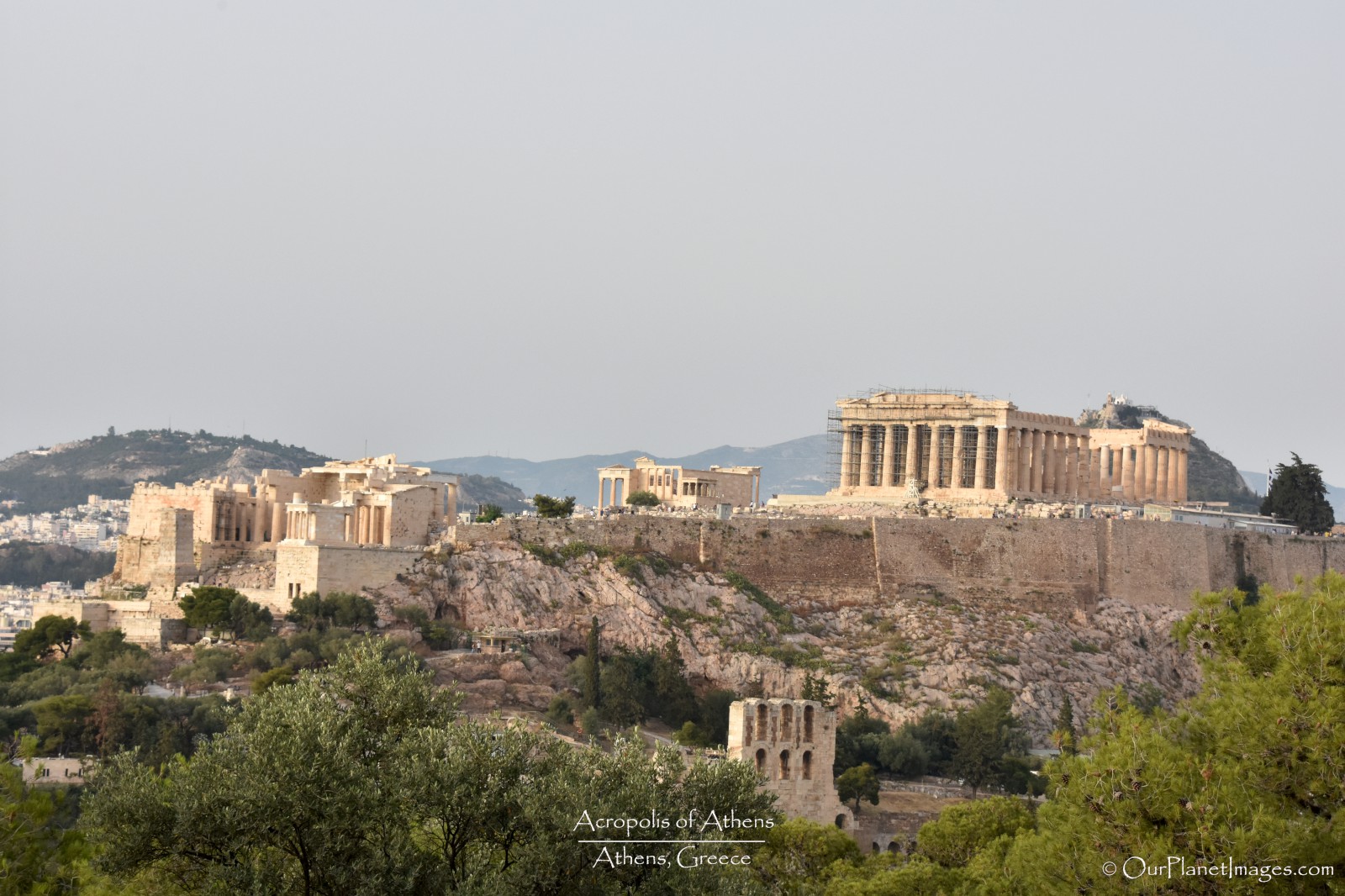
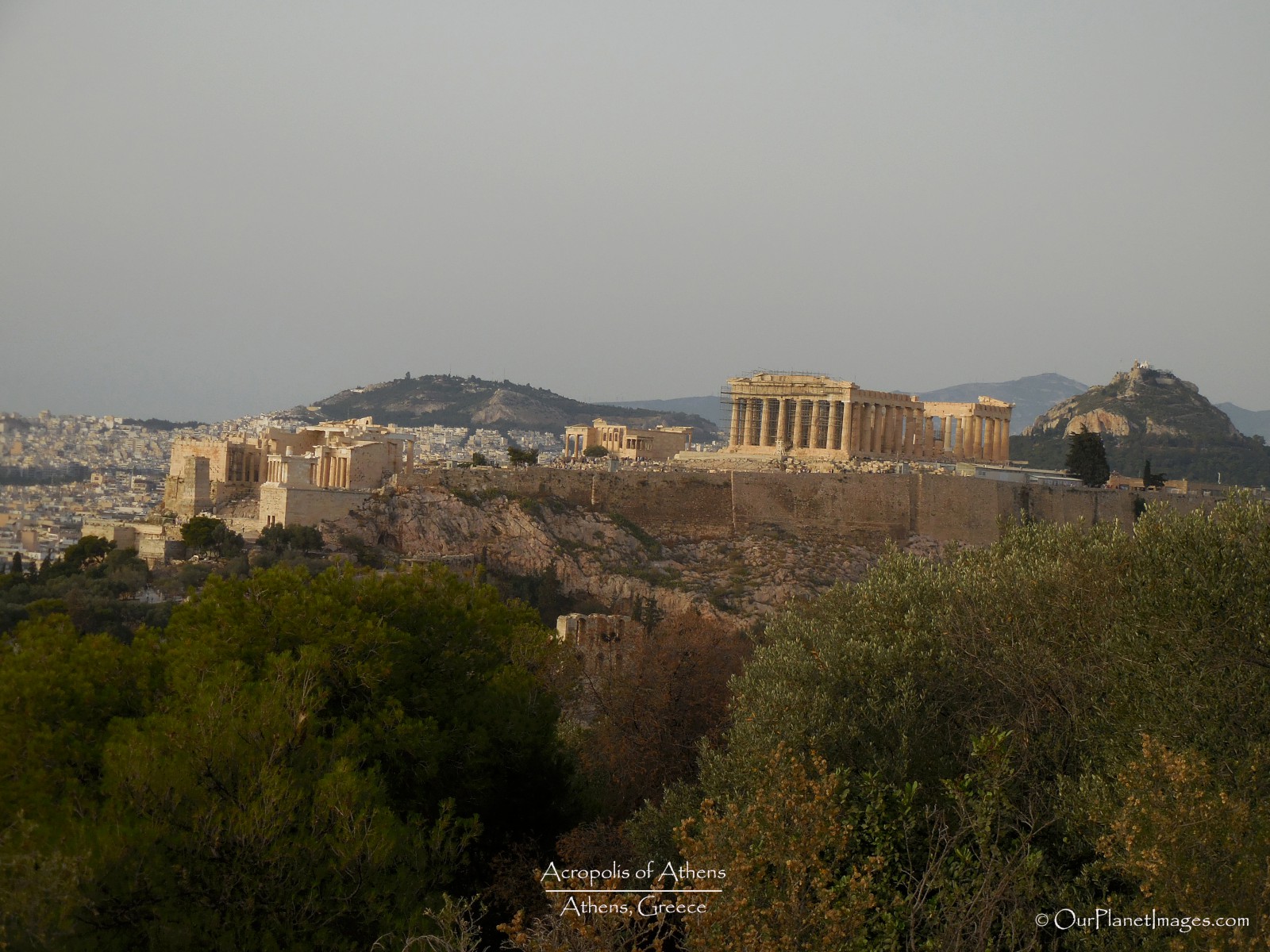
Fantastic! Thanks for sharing.
Thanks Kevin! I am glad that you enjoyed this post.
Doug, excellent job explaining all the buildings, the history and their purposes.
I missed most everything that was said during this portion of the tour because I was so enthralled with what I was seeing and with taking photos. Your photos are fantastic!
Thanks Dawn! This post took me a while to put together because I wanted to make sure to understand everything before I posted it.
Definitely on our bucket list! Thanks for sharing!
Thanks Leslie, get in touch with me before you go. I have a few ideas to share with you.